Russian Federation
Photos from our 1999 trip
My second visit was when Margaret and I visited Russia on our first around-the-world trip in 1999.
(99-days - Melbourne - Bangkok - Frankfurt - Moscoe - St. Petersburg - Stockholm - Helsinki - Copenhagen - Malaga - London -
Western Europe - UK - Egypt - Jordan - Israel - Greece - New York - Las Vegas - Melbourne.)
We flew with Luthansa from Frankfurt to Moscow.
This is our Moscow hotel, the Hotel Rossija.
It was adjacent to the Kremlin and is in the Guiness Book of Records as one of the world's largest hotels with 3200 rooms.
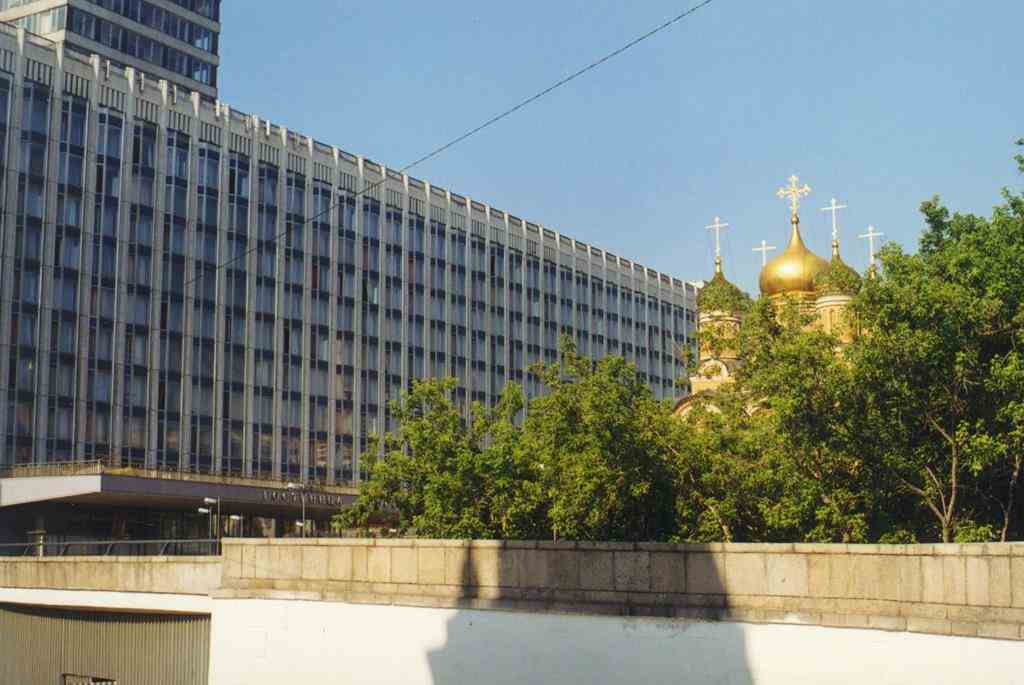
This was the view when you lay on our hotel bed.

Another view when you lay on our hotel bed.

Yet another view when you lay on our hotel bed. A new shopping plaza being built behind the façade of a lovely Russian building.

New wooden shingles on the roof of a building near our hotel.
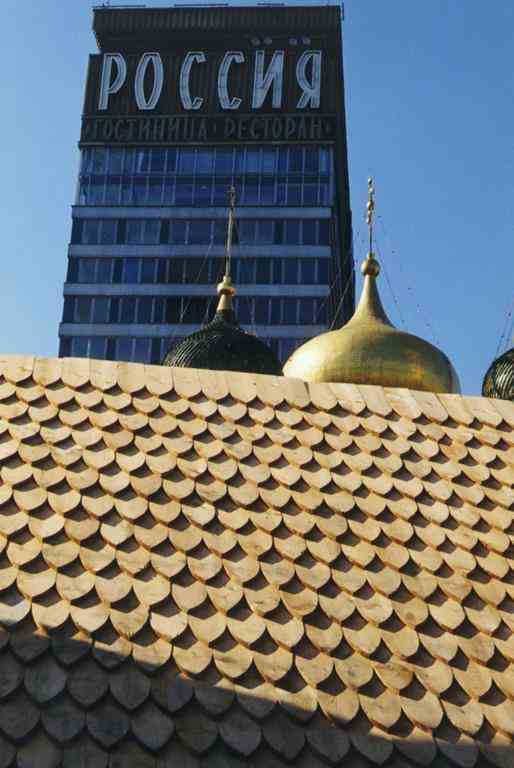
A view across Red Square over Lenin's Mausoleum to the Kremlin.
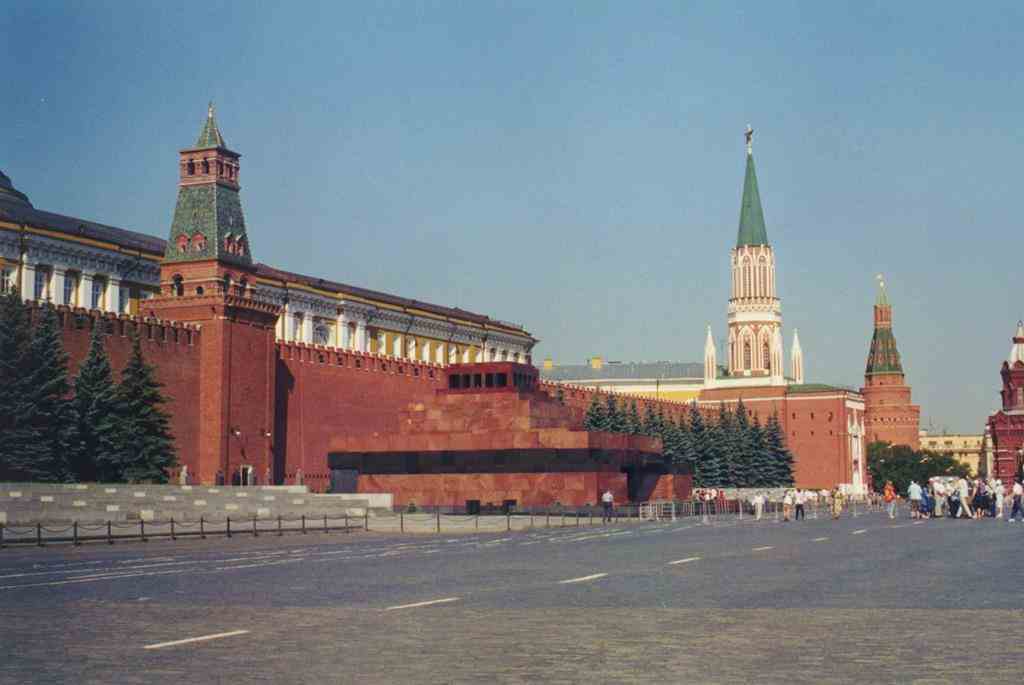
St. Basil's Cathedral on the edge of Red Square. You can see our hotel in the background.
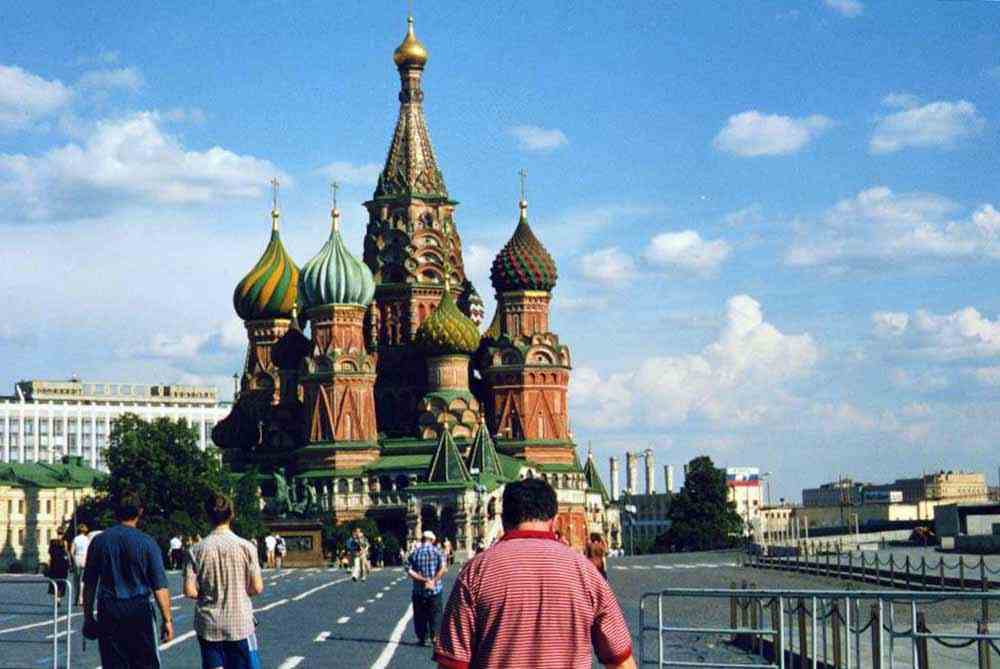
The Moskva River, the Kremlin and our hotel.
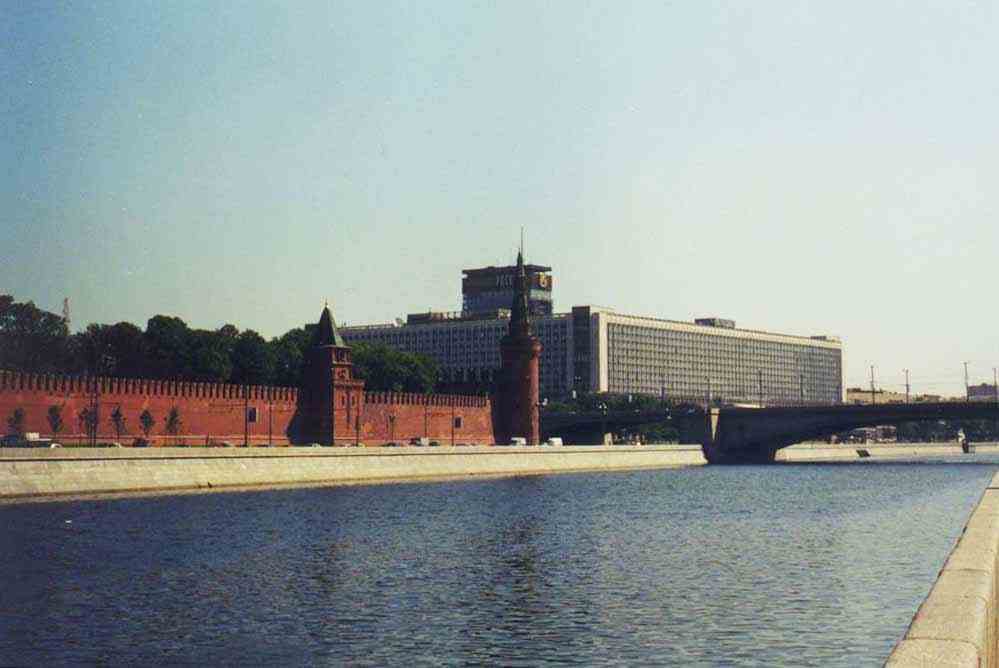
The glittering Armoury building inside the Kremlin which houses the stunningly beautiful Russian crown jewels.
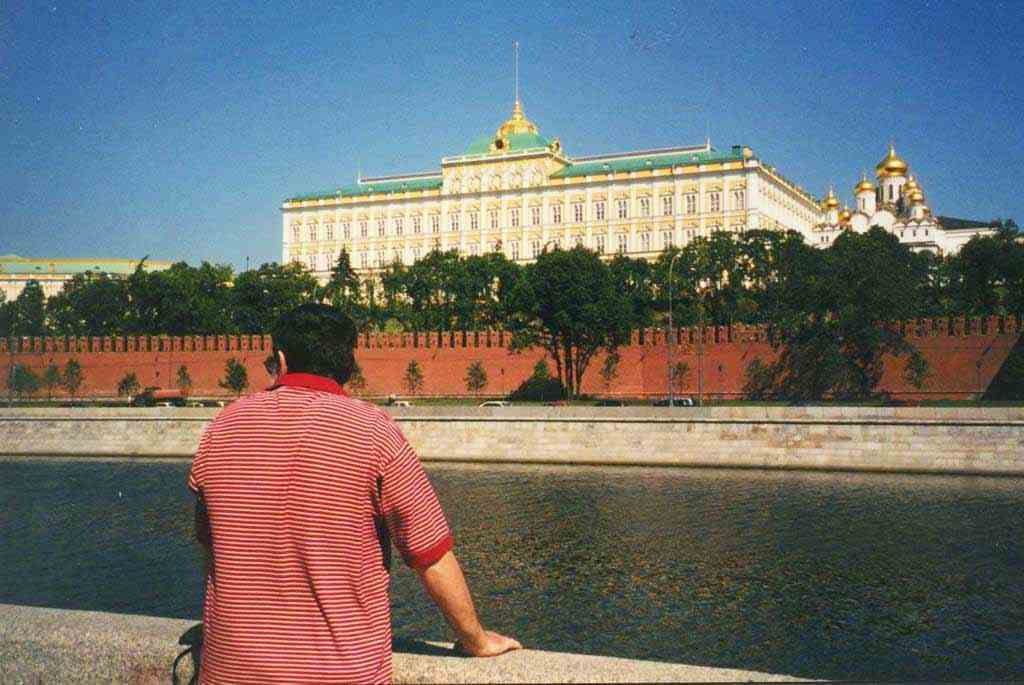
The Kremlin wall near Lenin's Mausoleum.
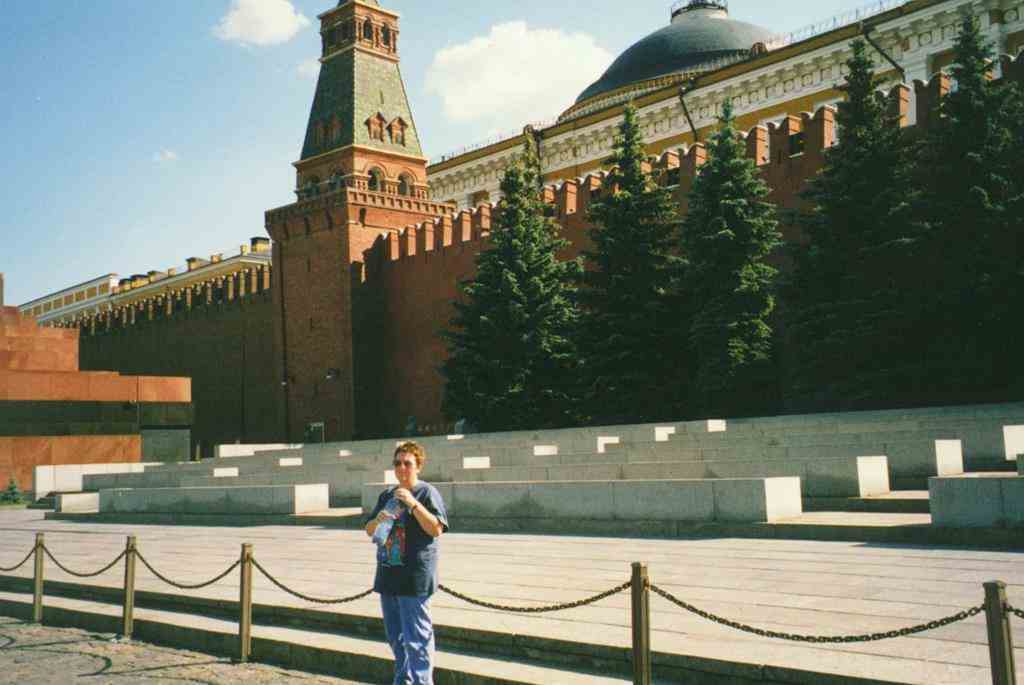
Along one of the sides of the Kremlin with our hotel in the background.
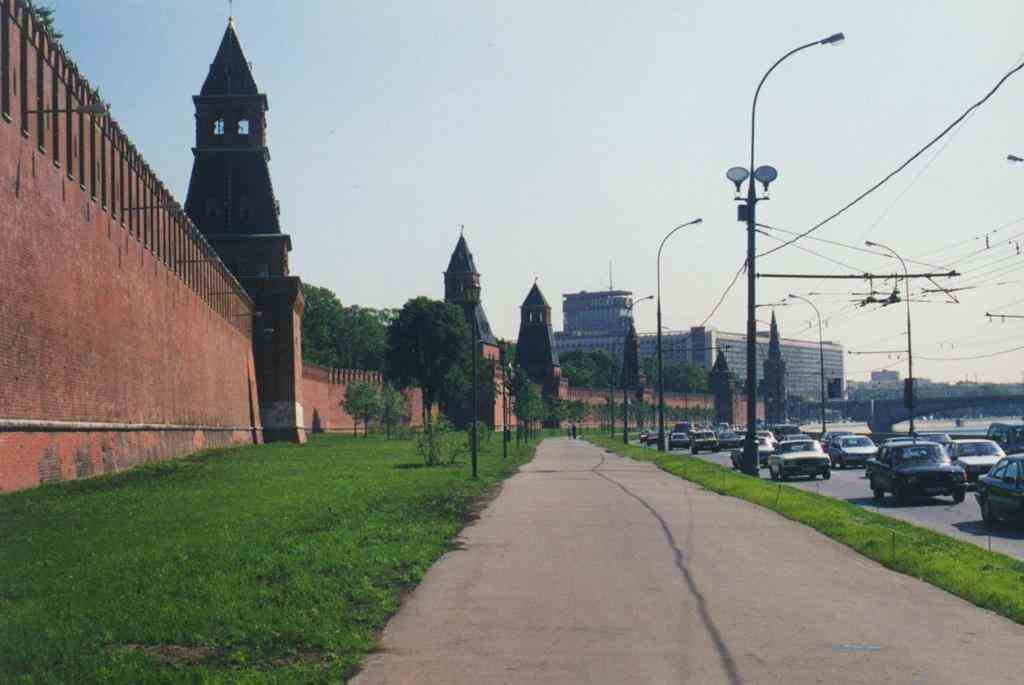
St. Basil's Cathedral.

Saviour (Spasskaya) Gate Tower of the Kremlin.
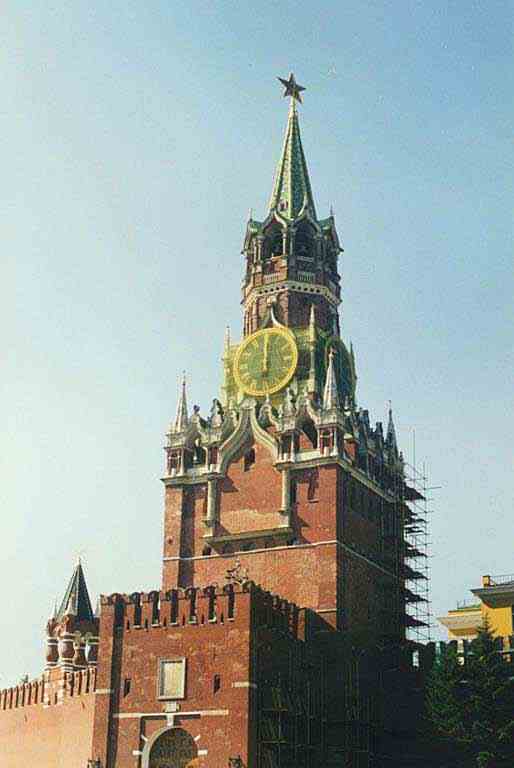
The Church of the Nativity of the Virgin in Putinki. (Mid 17th Century).

A closer view of the Armoury building inside the Kremlin which houses the beautiful Russian Imperial crown jewels.

Another tower in one of the walls of the Kremlin. The Kremlin is roughly triangular with 7 towers along each side. A total of 20 towers.
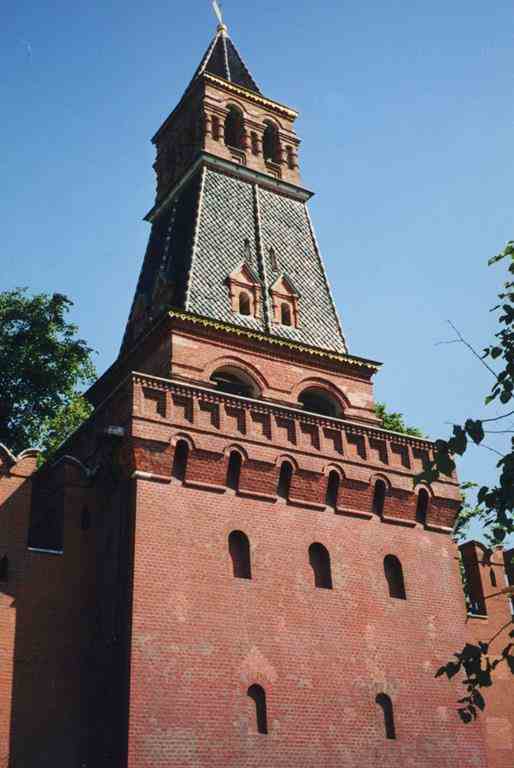
Another church near our hotel.

The Cathedral of the Annunciation, Archangel Cathedral and the Bell Tower of Ivan the Great inside the Kremlin.

The Kremlin wall near Lenin's Mausoleum.
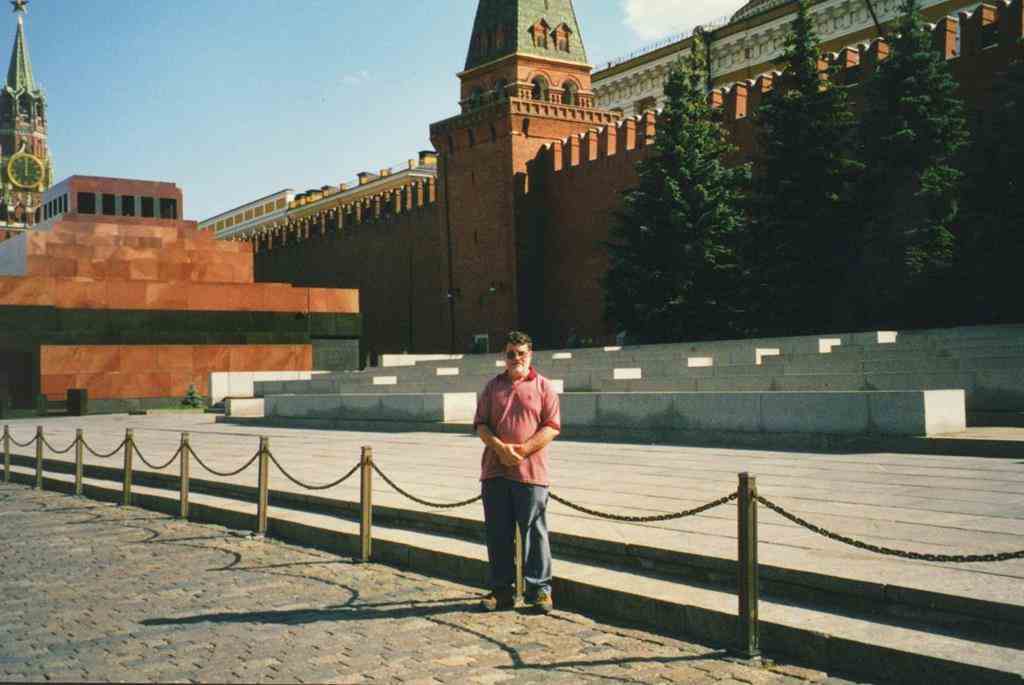
Red Square, St. Basils, Lenin's Mausoleum and The Kremlin.

A view of a Moscow street outside our hotel.
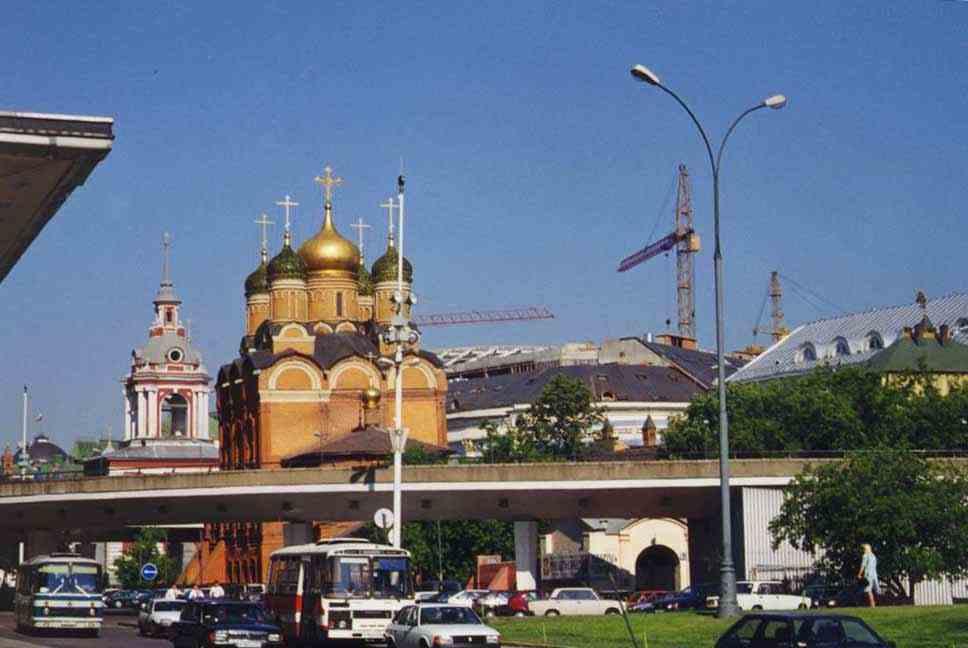
Another church that we saw in our walks near our hotel.
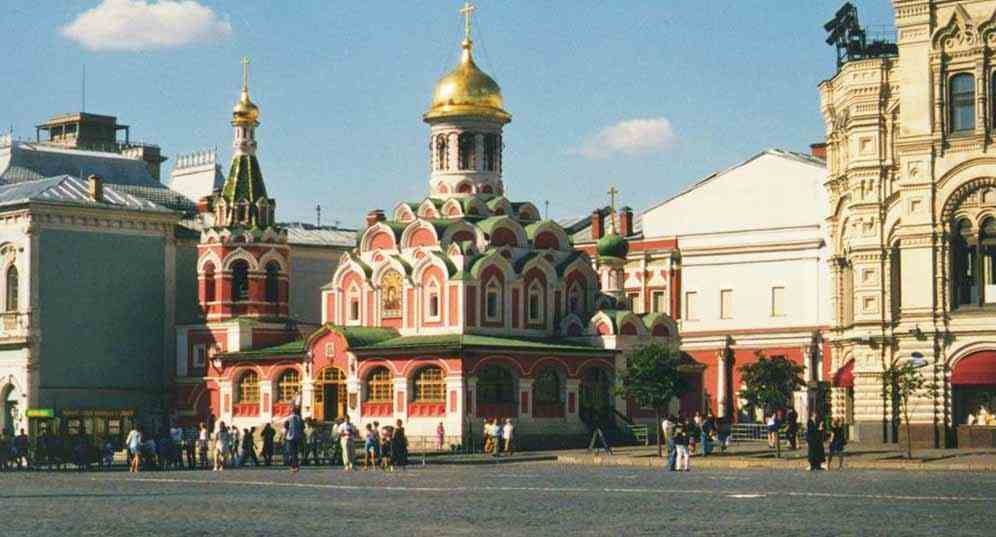
Gateways underneath the State History Museum on the northern side of Red Square.

Alexander Gardens, fountains and the Bolshoi theatre near The Kremlin.

A Russian limousine.
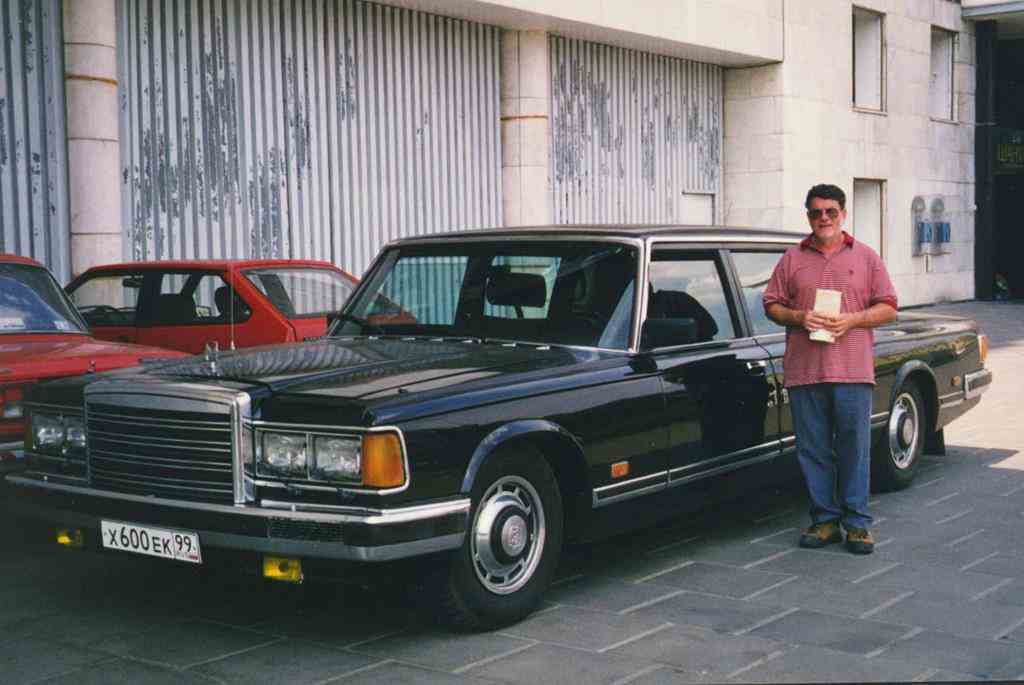
The former State Department Store {GUM store (Gosudarstvennyy Universaluyy Magazin)}. It is now has lots of upmarket boutique stores - Nike etc.
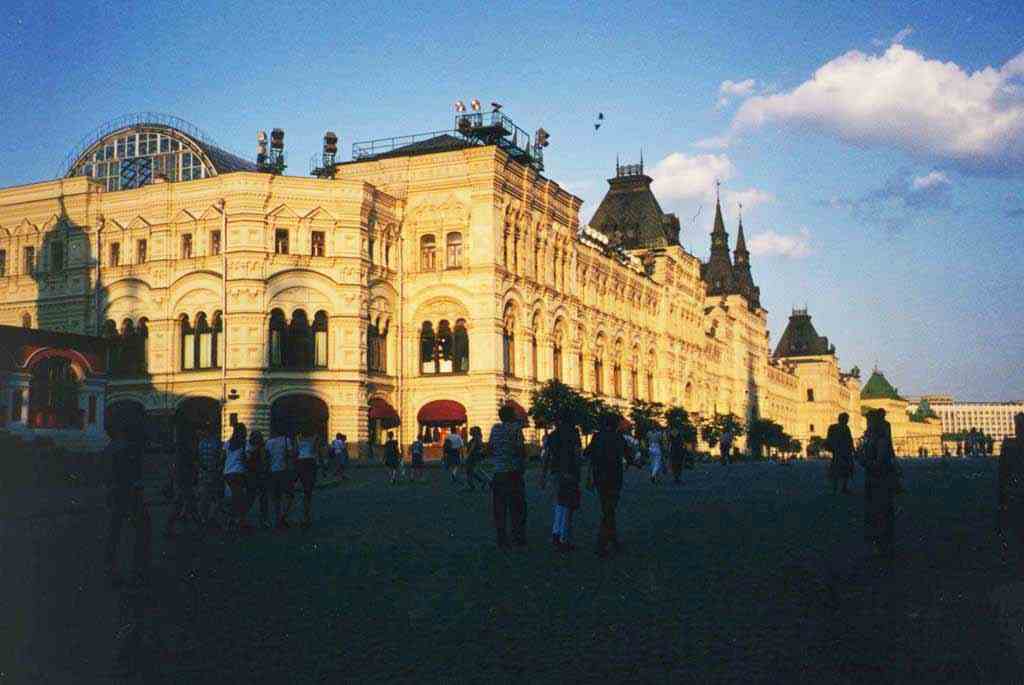
A beautiful Russian shop assistant at a shop at the GUM store.

Inside the GUM store.
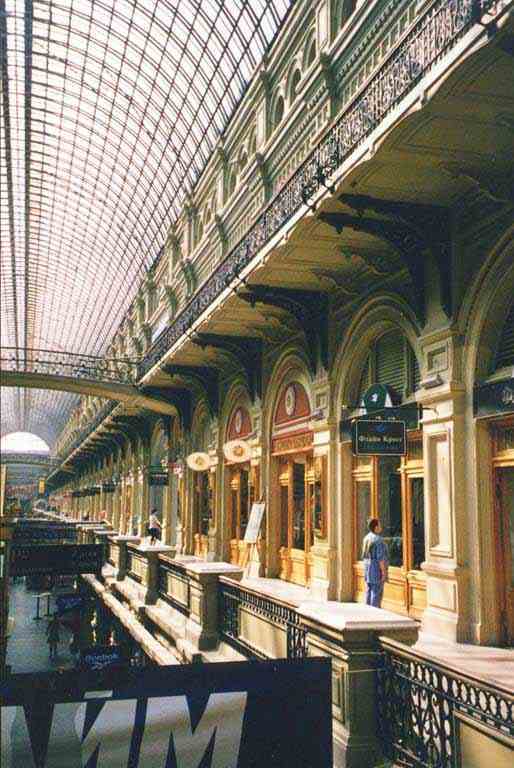
Part of the Moscow Metro, the Koltsevaya Line (Circle Line) was built in 1950–1954.
Of all the lines, it remains the most famous. It is notable for stations built at the height of Stalinist architecture.
Stalin had the vision to create a Metro system that would resemble “People’s Palaces”.
One of the beautiful Moscow metro stations. Most had chandeliers. It was a very efficient rail network as you never had to wait more than 90 seconds for a train.

Another Moscow metro station.
The people were very orderly; they waited on either side of the train door for the departing passengers to exit before they boarded the train

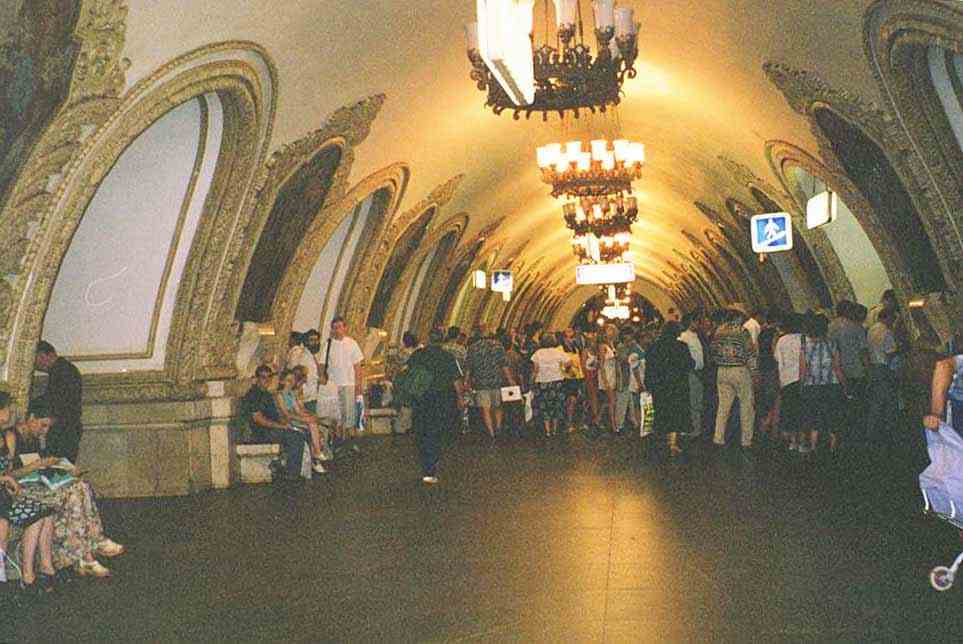
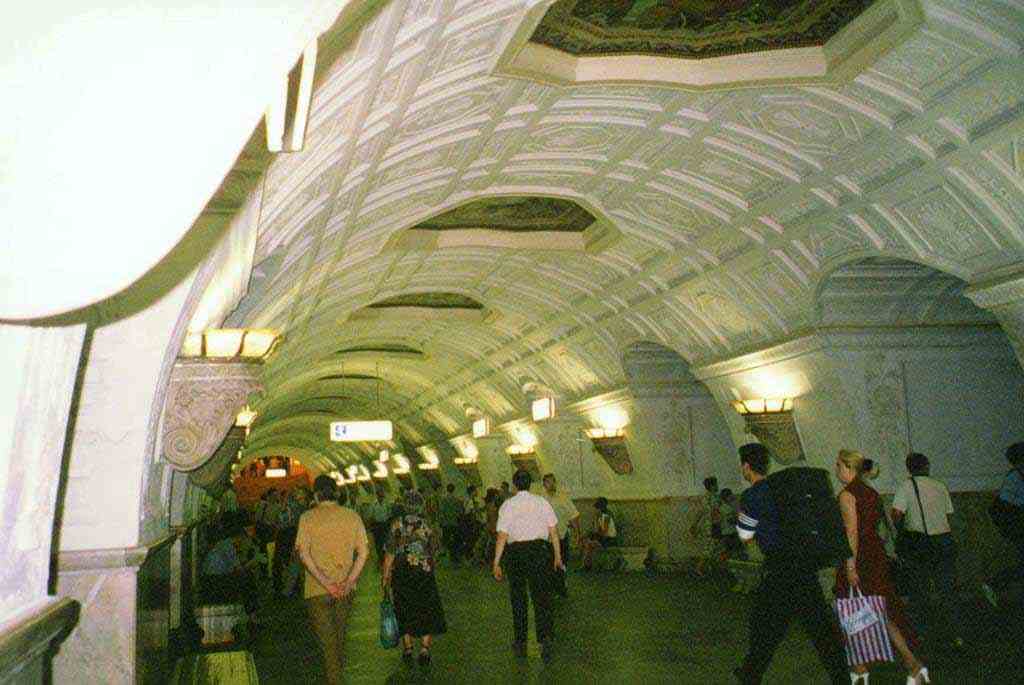
The ceiling of one of the Moscow metro stations.

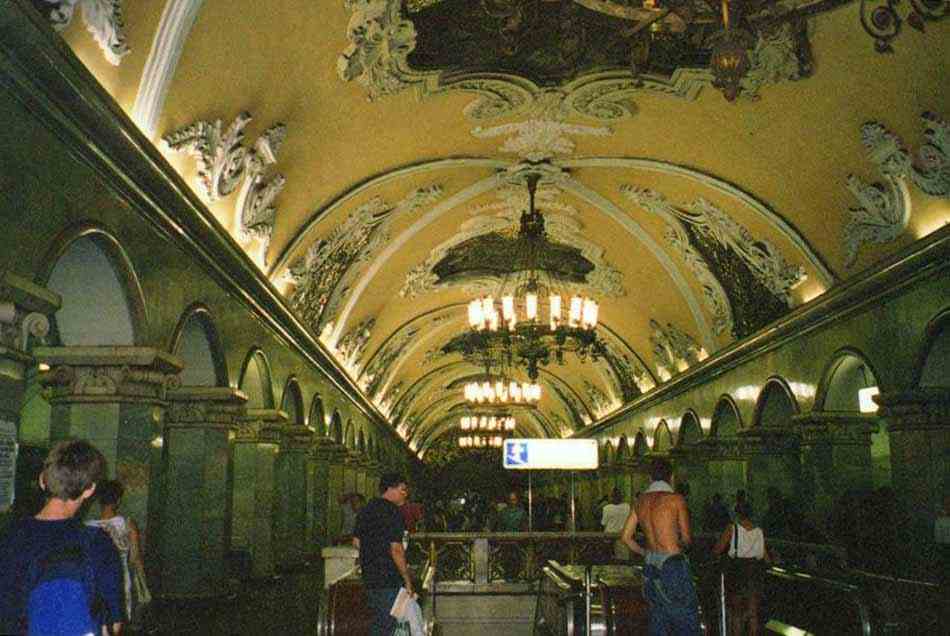
A plaster mural in one of the Moscow metro stations.

A tiled mosaic in one of the Moscow metro stations
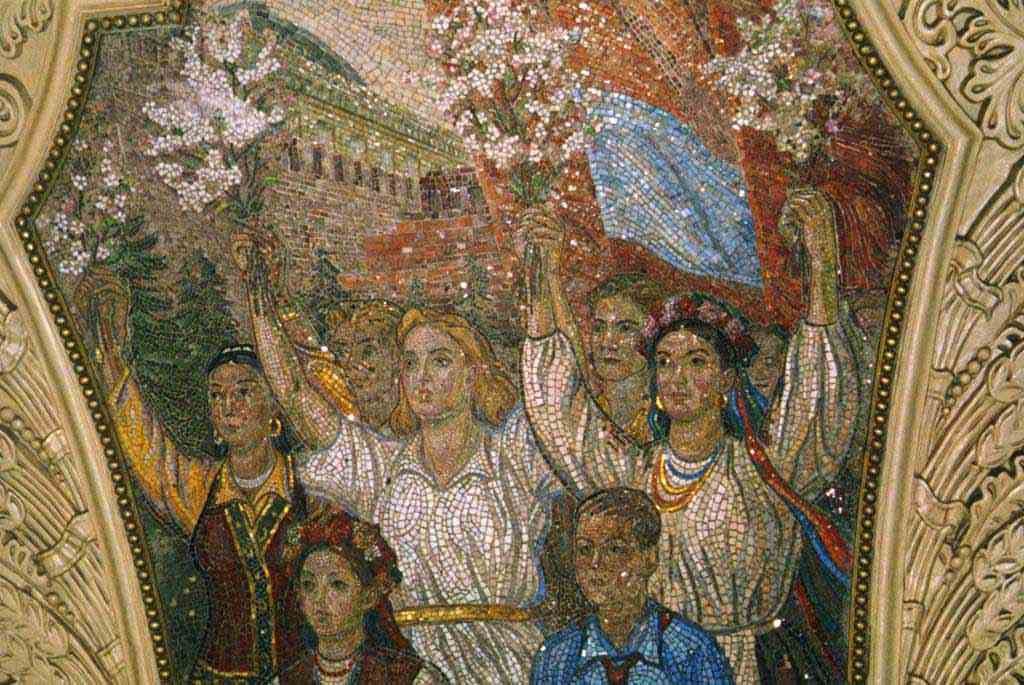
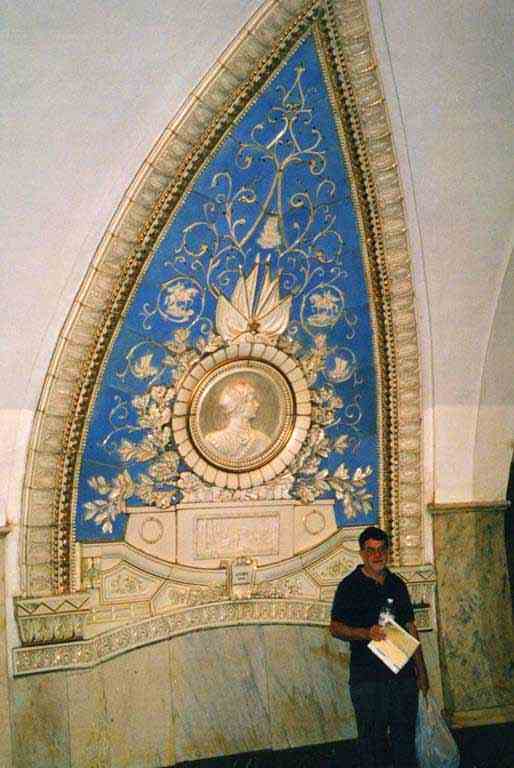


They sweep up the leaves with a broom.
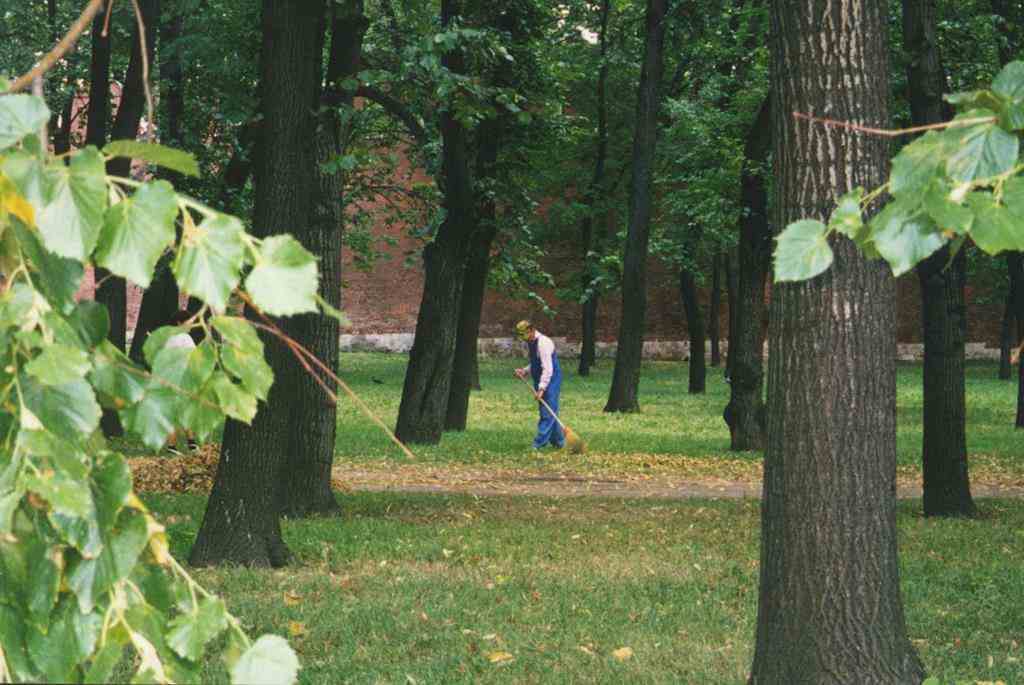
The lake and gardens near the Novodevichy Convent

The walls of the Novodevichy Convent.

Bronze ducks near the Novodevichy Convent.
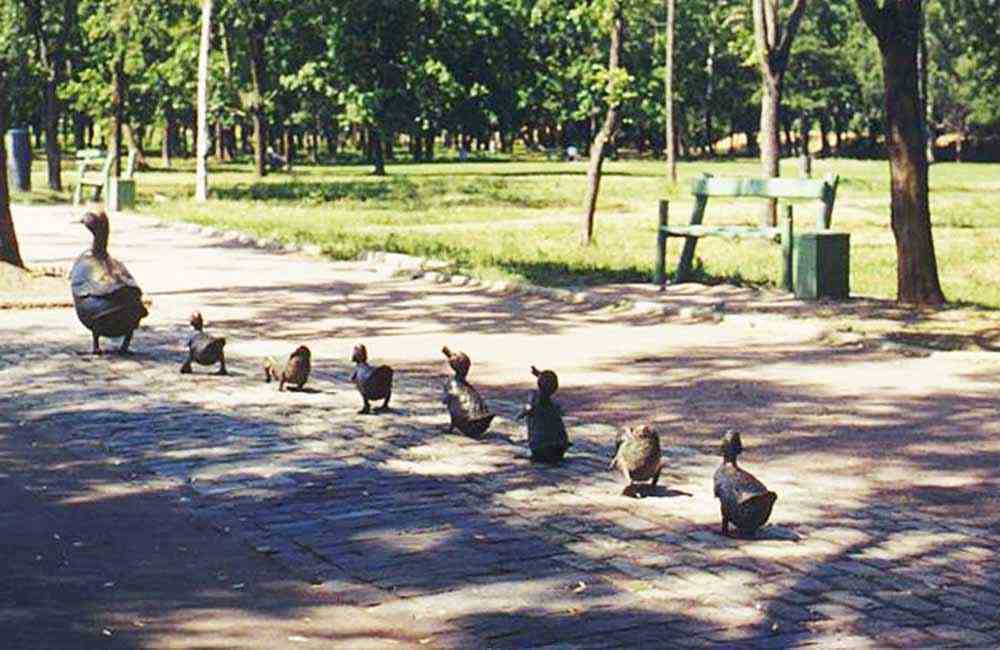
A park near the Novodevichy Convent.

Margaret writing up her diary with a drink at an underground shopping centre near the Kremlin.
It was the only air conditioned place that we could find in the 32 degree heat. It could be anywhere in the world.
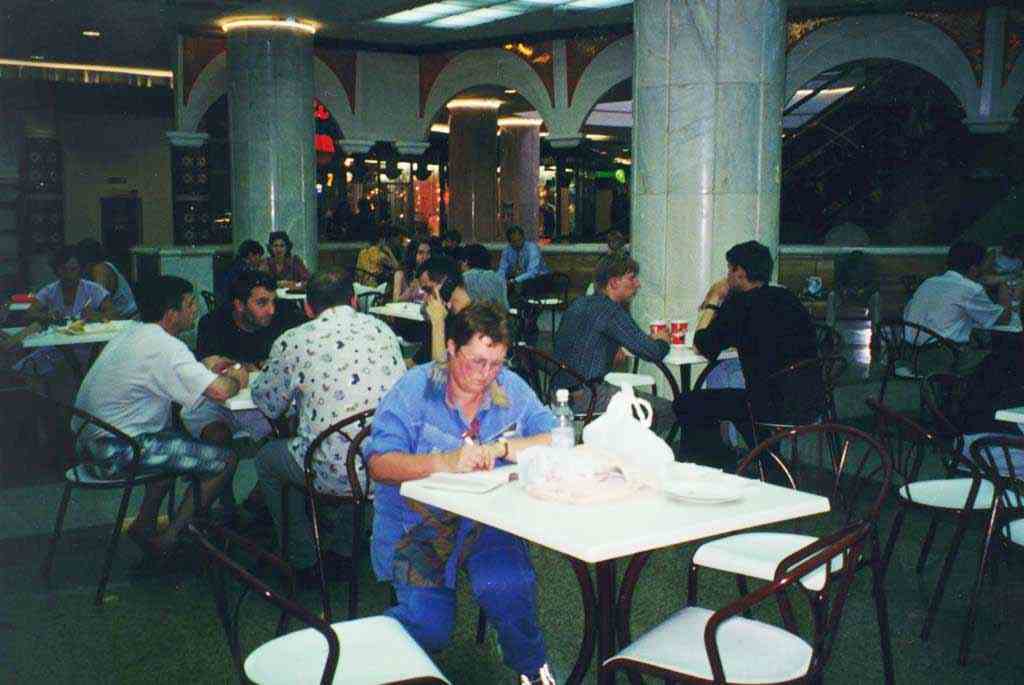
The skylight of the underground shopping centre.

A fountain near the underground shopping centre.
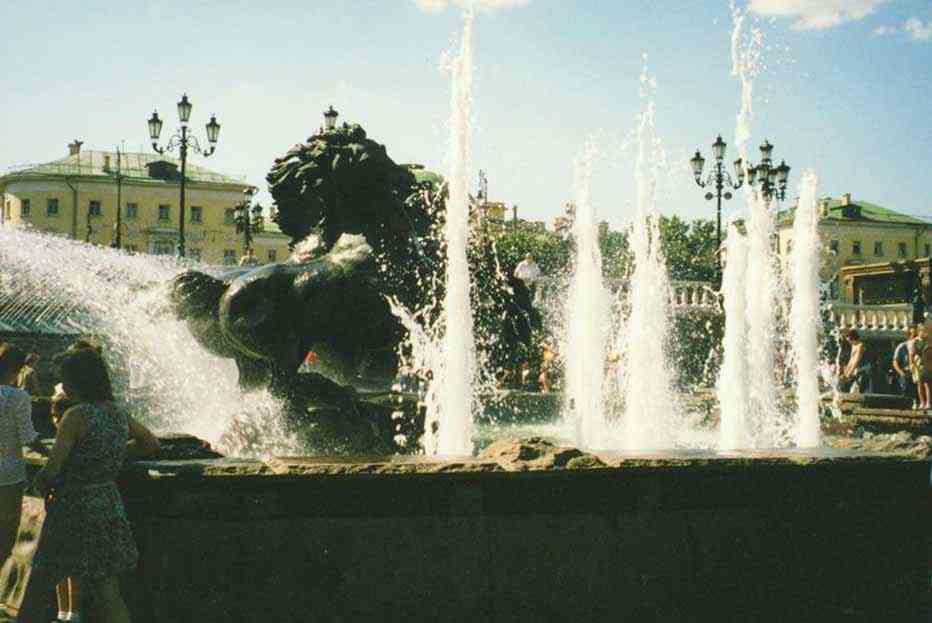
The Moscow State University from Sparrow Hill.
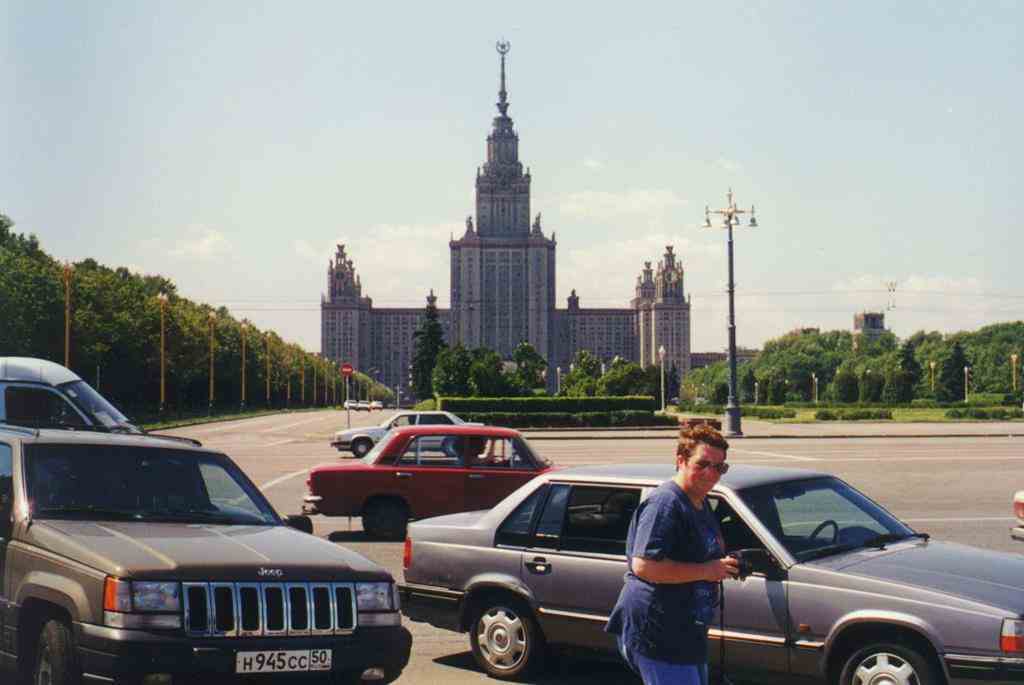
The view of a soccer stadium from Sparrow Hill.
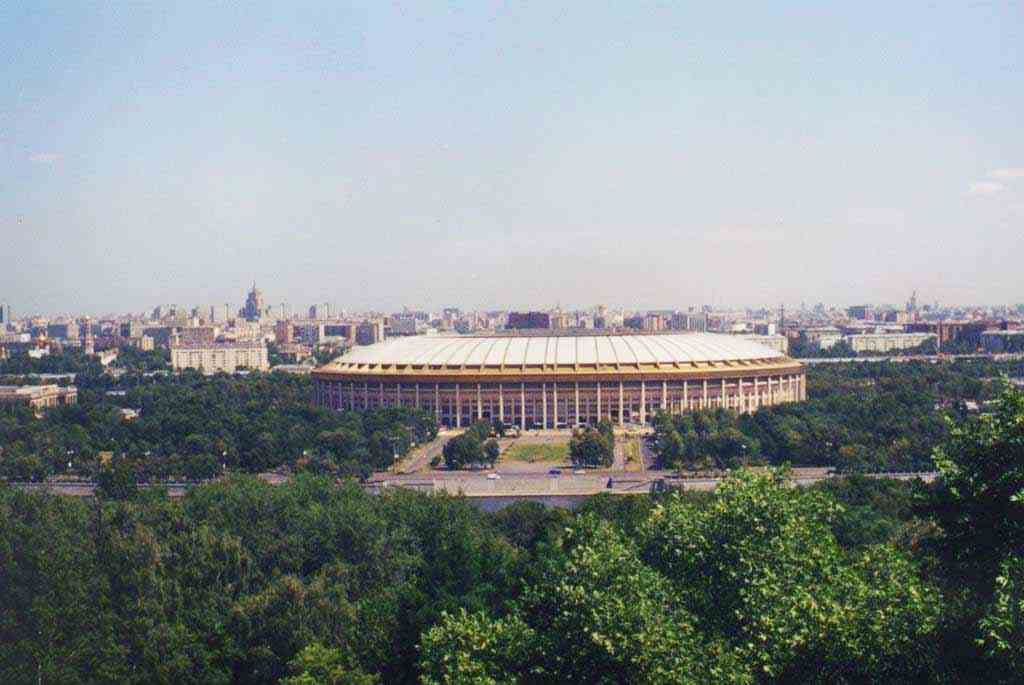
Arbat Street pedestrian mall. Lots of souvenir shops selling various Russian nesting dolls. You could buy Yelsin, Clinton, Monica Lewinski dolls etc.
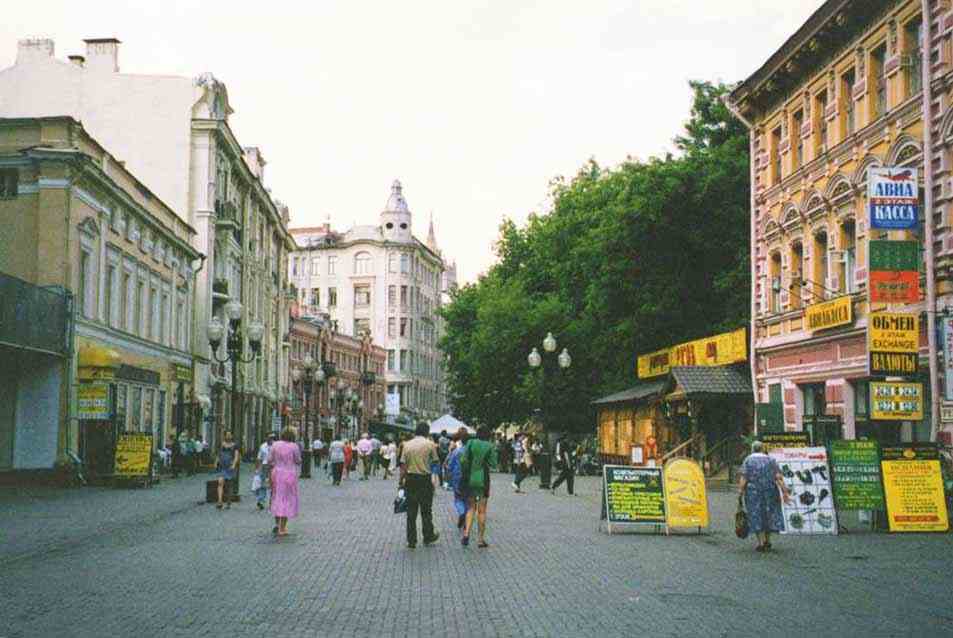
A rest from the walking and shopping in Arbat Street pedestrian mall.
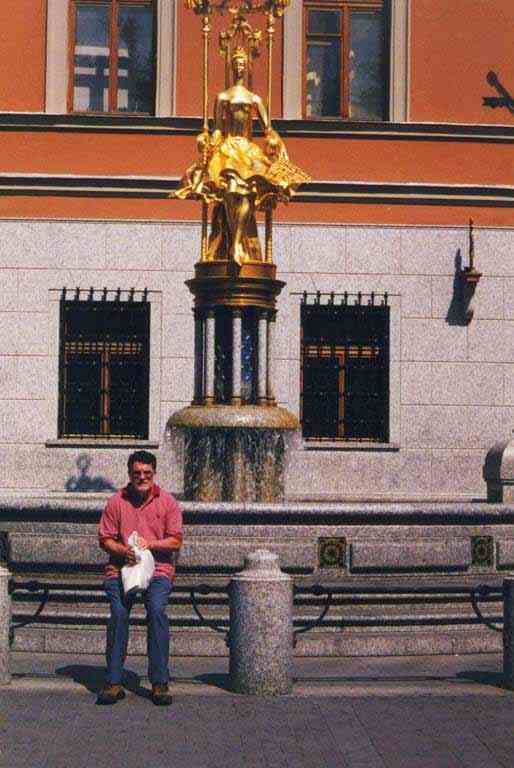
Musicians performing in an underpass under a street in Moscow. They were very, very good. Probably unemployed graduates from a music academy

A Russian crown used in the coronation of Tsars.

A painting "A lady with a rose" (1560) by Pari Pascalinus Bordone (1500 - 1571) in the Puskin Fine Arts Museum in Moscow.

This huge ship mounted on a column was to be a monument to Columbus. However it was changed to be a monument to Peter the Great.
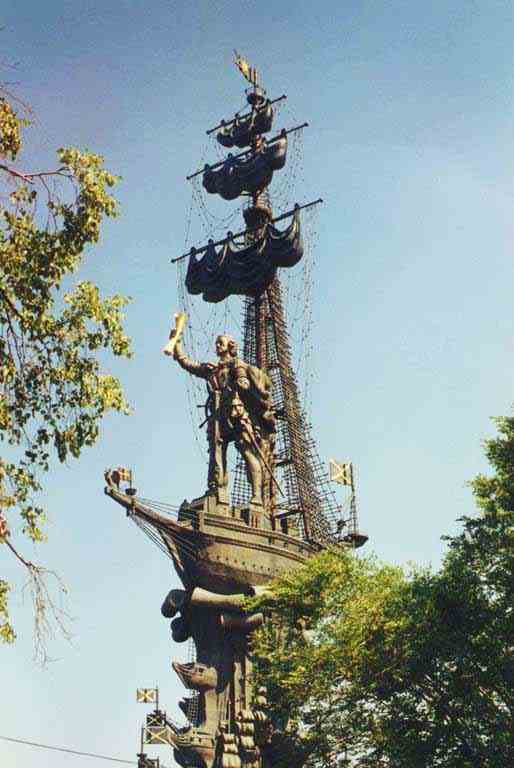

We travelled on the overnight train from Moscow to St. Petersburg.
St. Petersburg
When I visited the city in 1985 it was called Leningrad.
In September 1991, the original name, Sankt-Peterburg, was returned by citywide referendum.
Today, in English the city is known as "Saint Petersburg".
Local residents often refer to the city by its shortened nickname, Piter.
[In September 1914, after the outbreak of World War I, the Imperial government renamed the city Petrograd, meaning "Peter's city",
in order to expunge the German words Sankt and Burg.
On 26 January 1924, shortly after the death of Vladimir Lenin, it was renamed to Leningrad.]
St. Peter and Paul fortress across the Neva River in St. Petersburg.
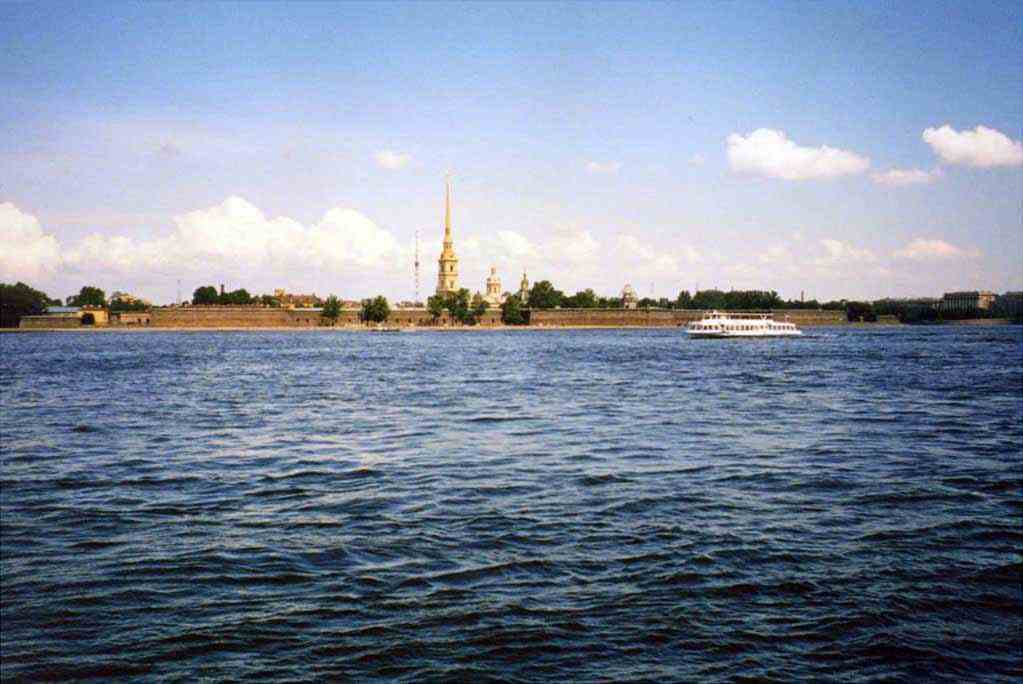
Peterhoff
Located just outside the city, Peterhoff was the summer palace of Peter the Great.
This was the best place that we saw on the whole trip. It is a sight that everyone must see in their lifetime.
The magnificent guilded fountains at Peterhoff.

There were over 250 fountains, mostly gilded at Peterhoff.

The beauty of Peterhoff was unrivalled by anything we saw on the whole trip.

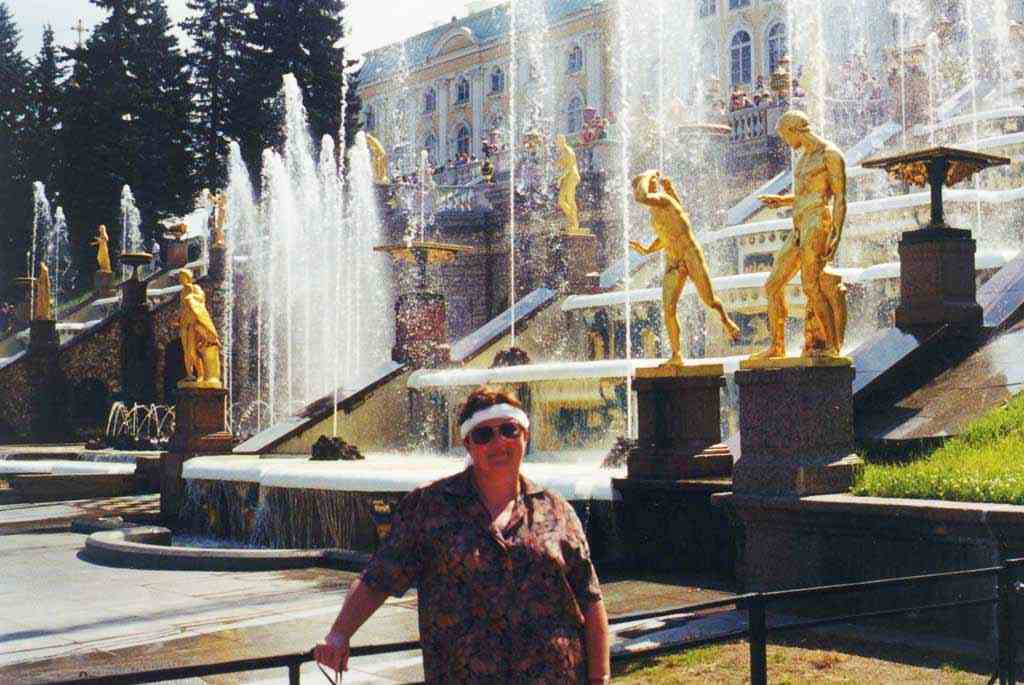
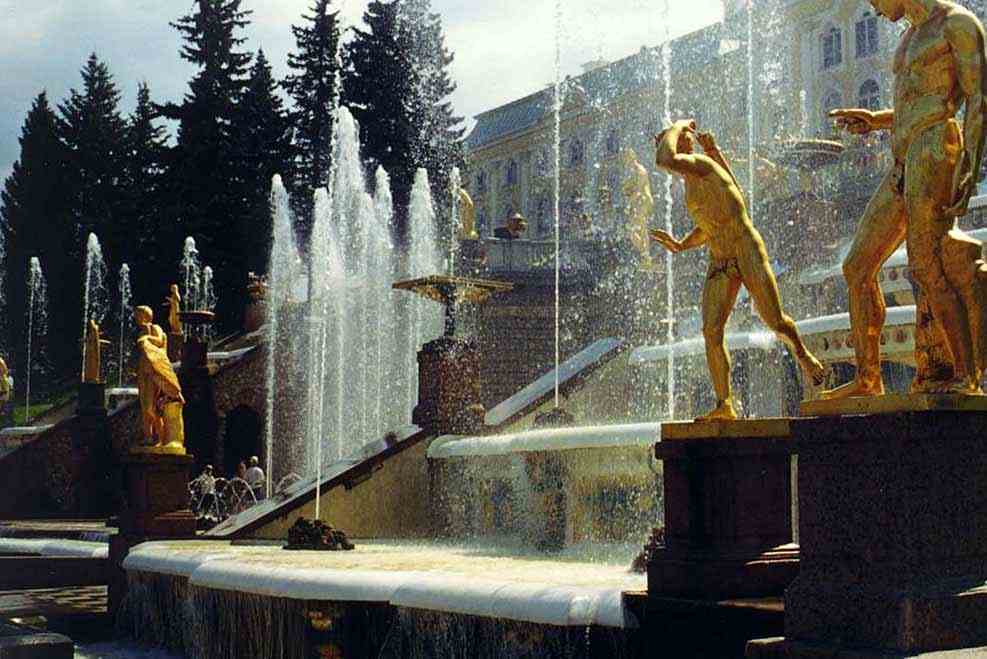

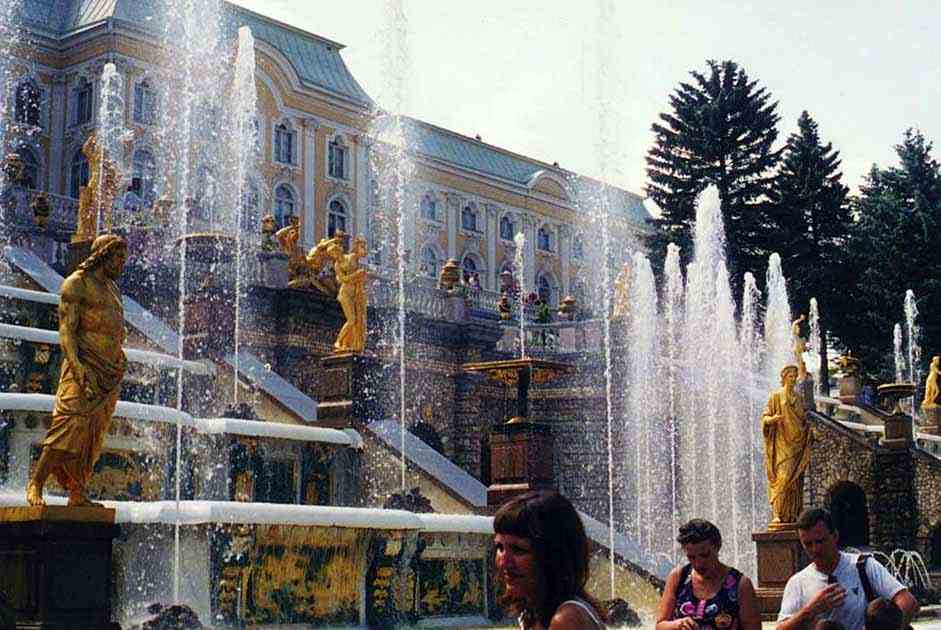
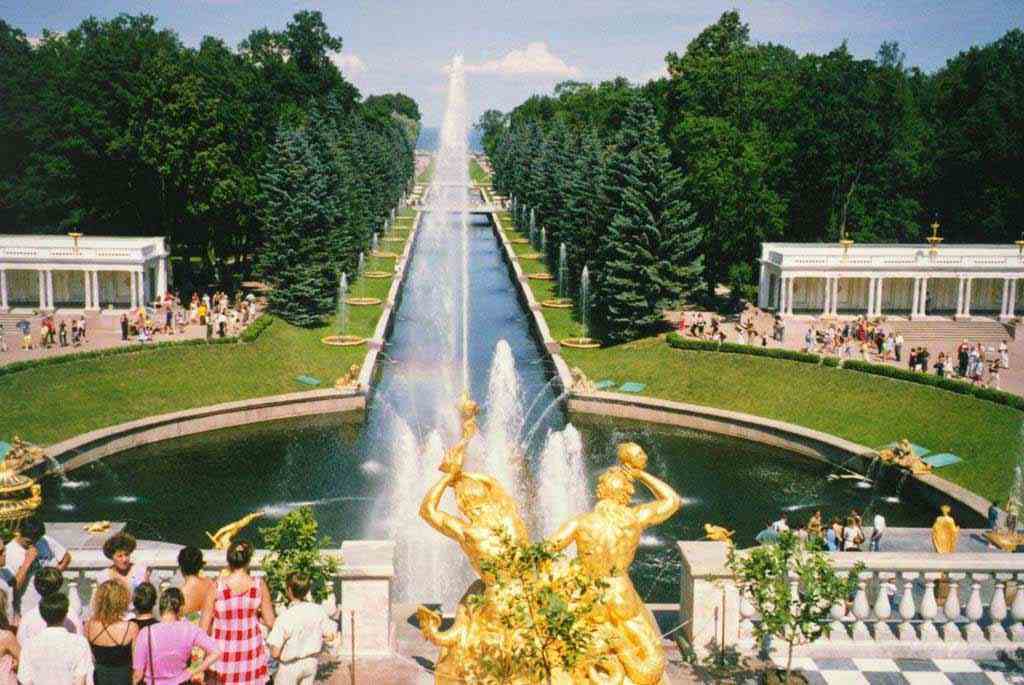
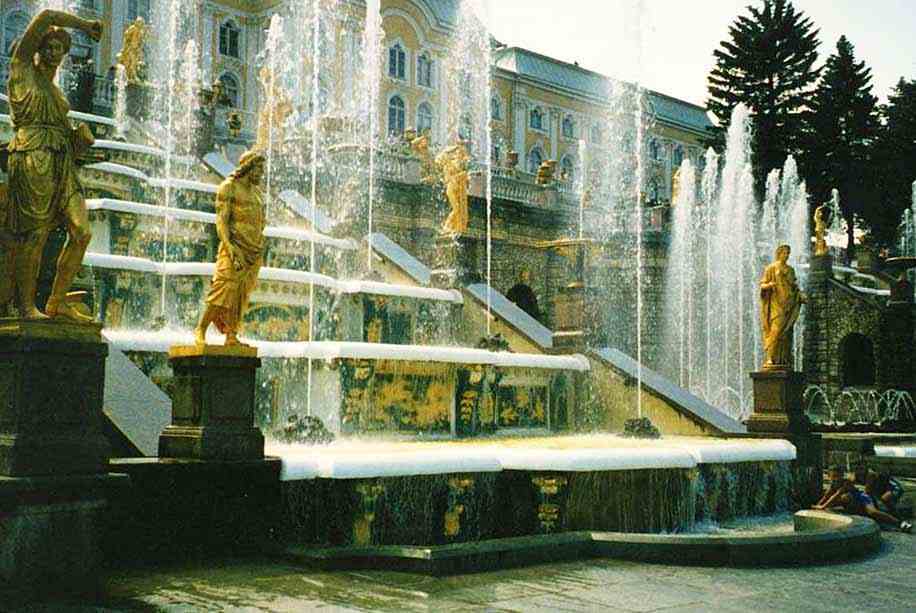
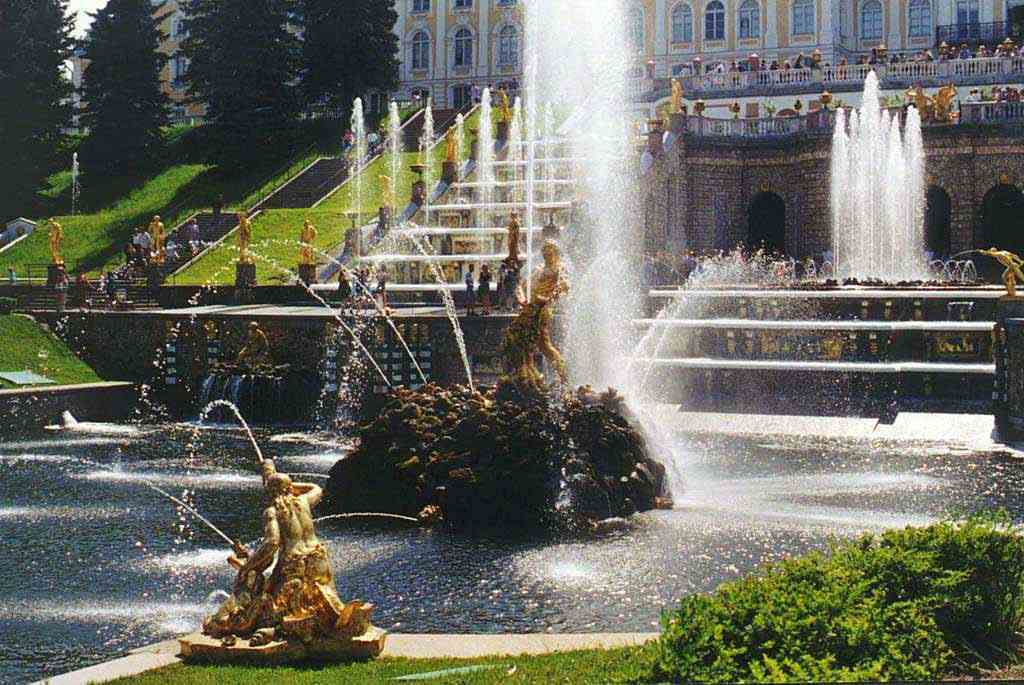




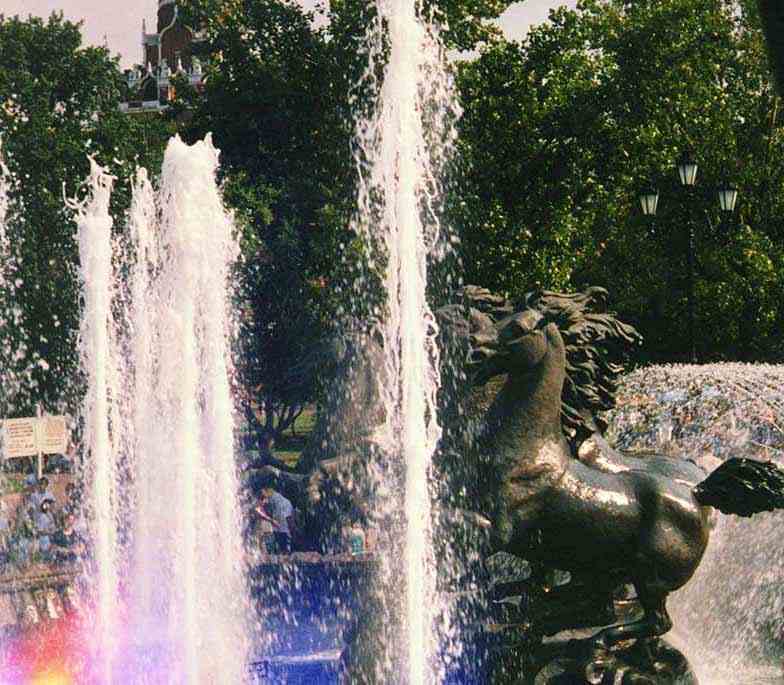

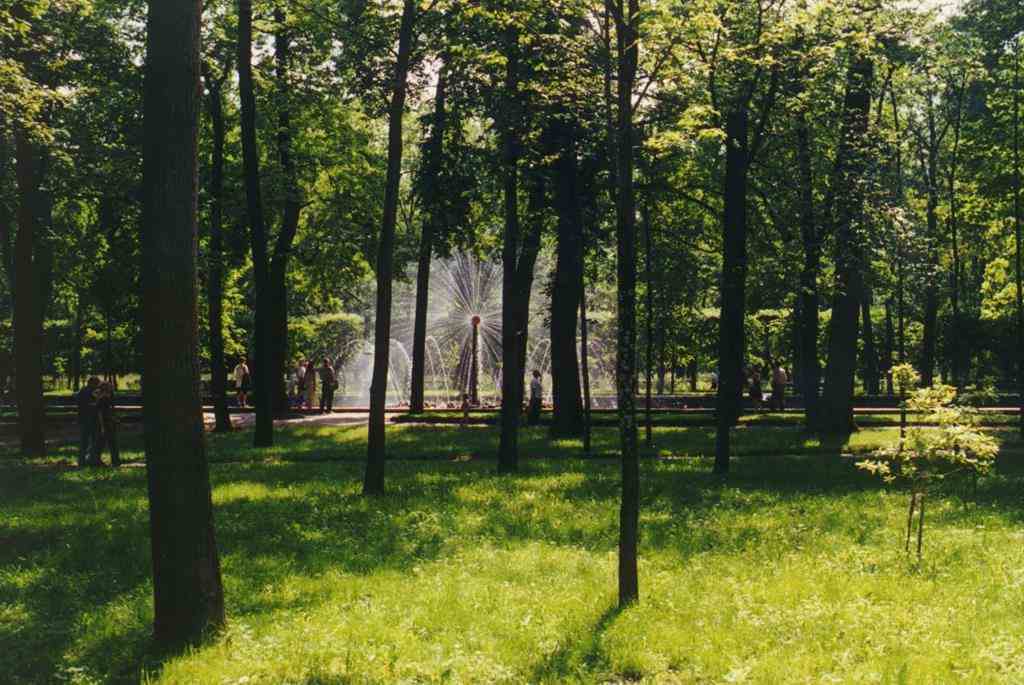
As you can see in this photo and the next one this fountain head rotates to produce a different water pattern.
It is amazing to realise that these were designed 300 years ago.
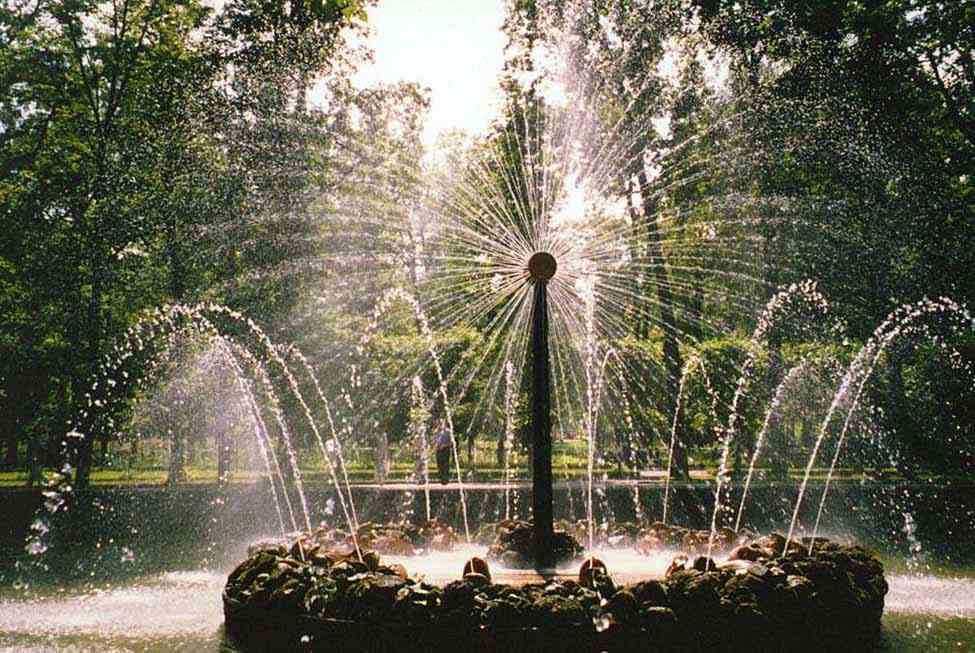
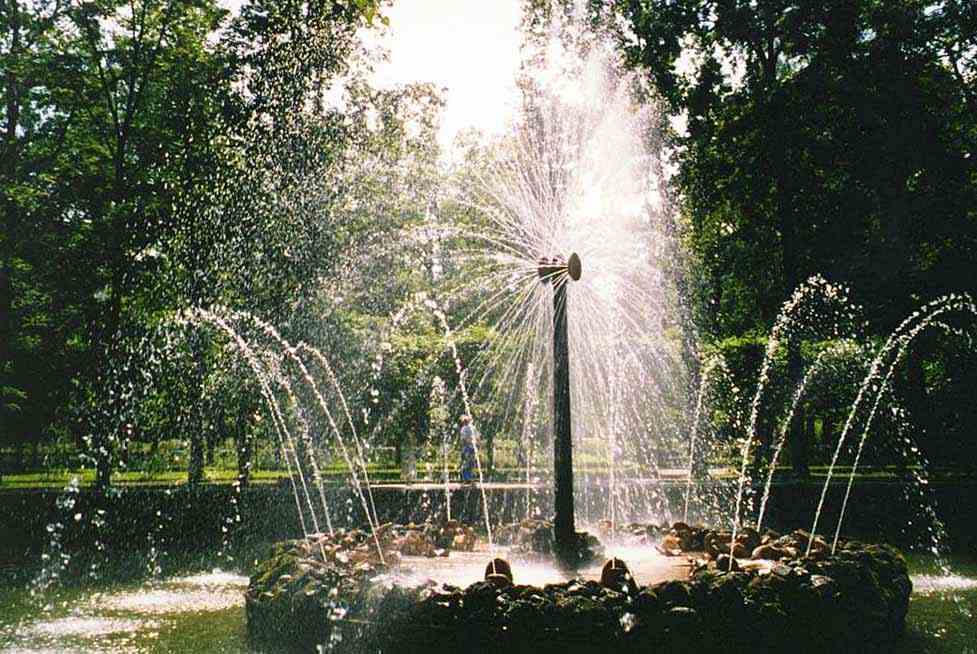
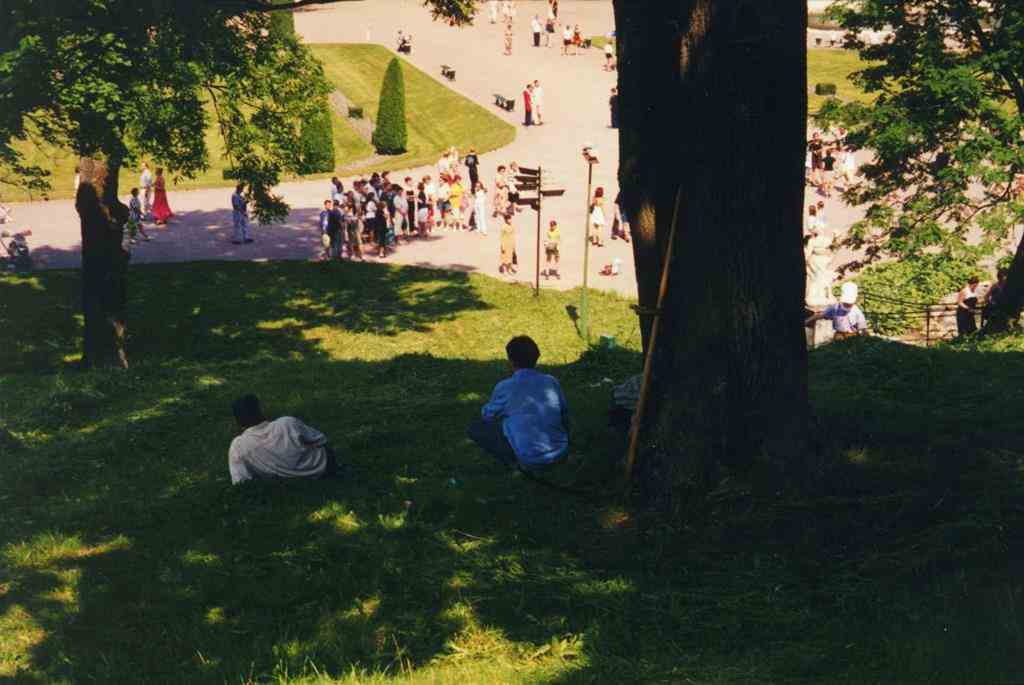
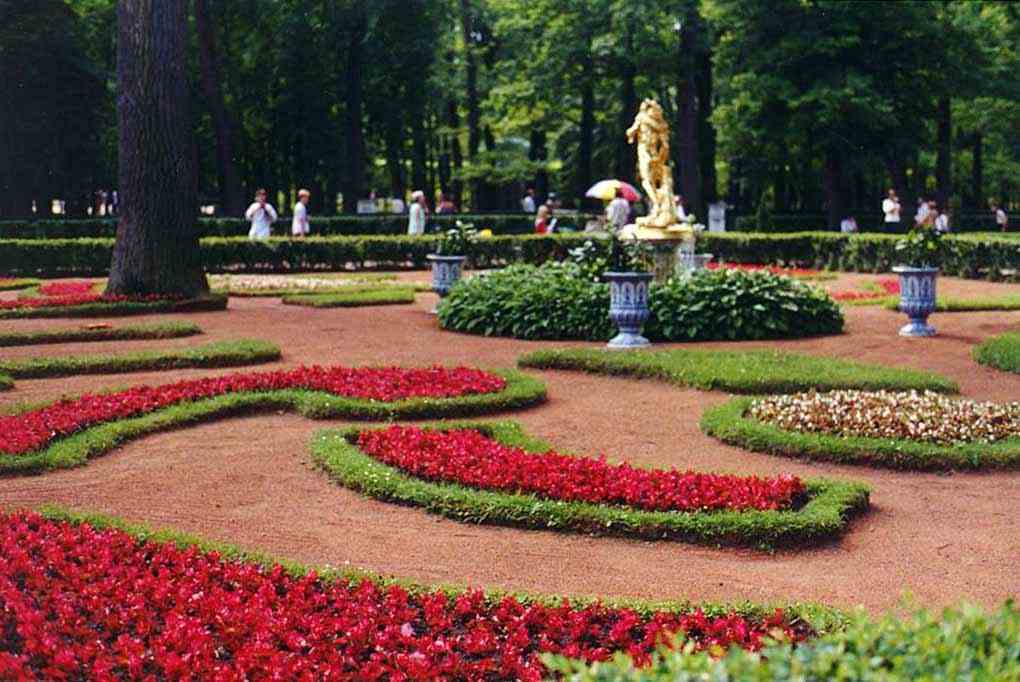
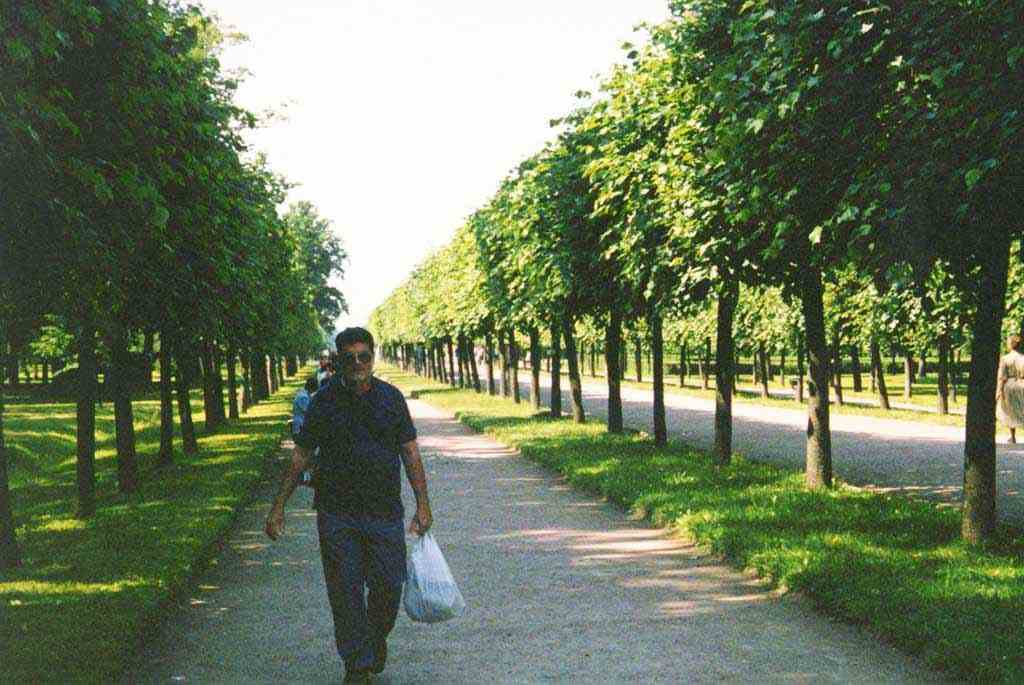

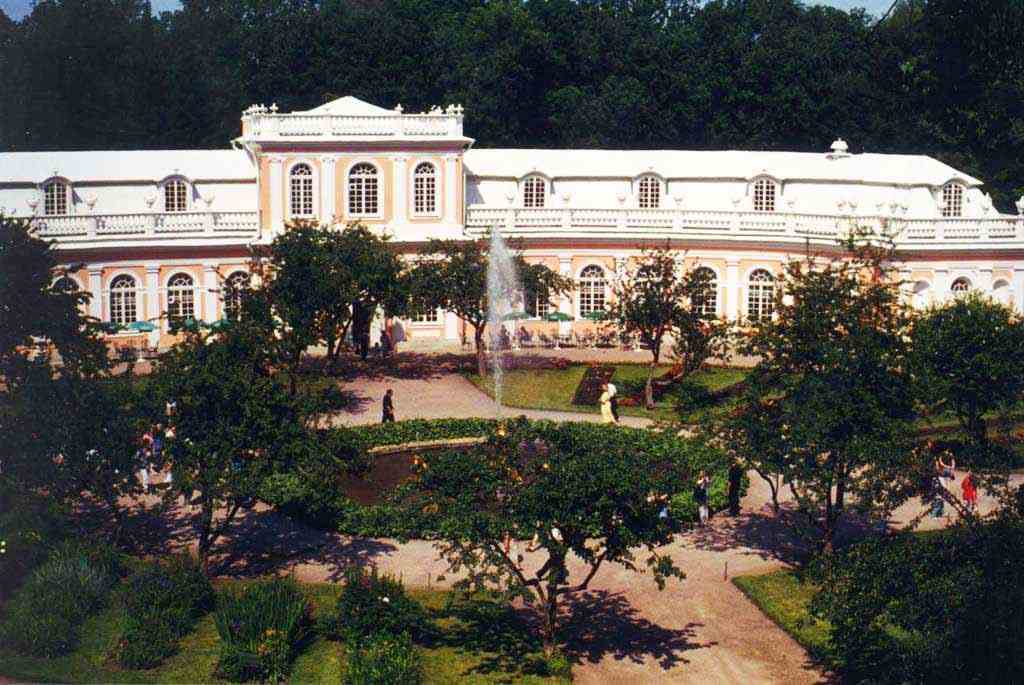
The chessboard fountain.

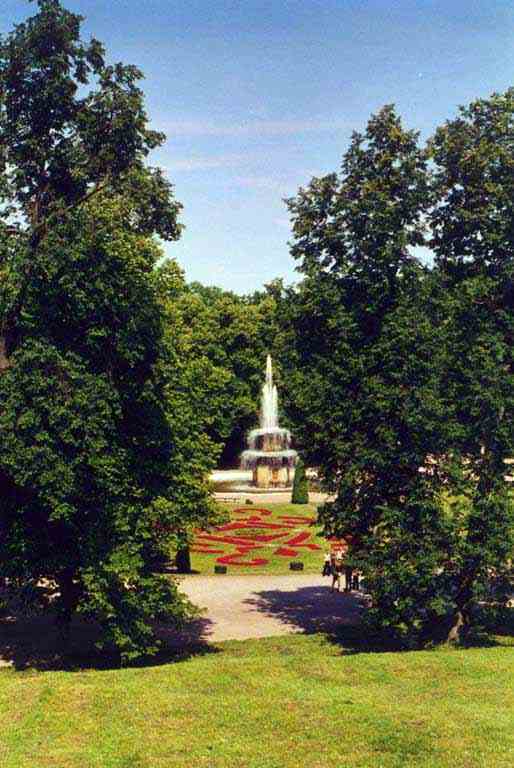
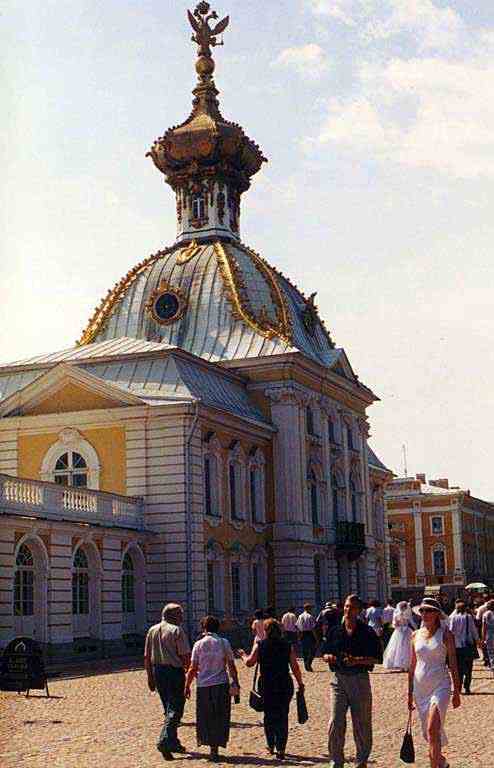
The Church of the Resurrection of Christ in St. Petersburg that our guide, Olga, thought was rather tacky.
Note the Mercedes 180 in which we did most our travelling in St. Petersburg with our private driver, Alexander.
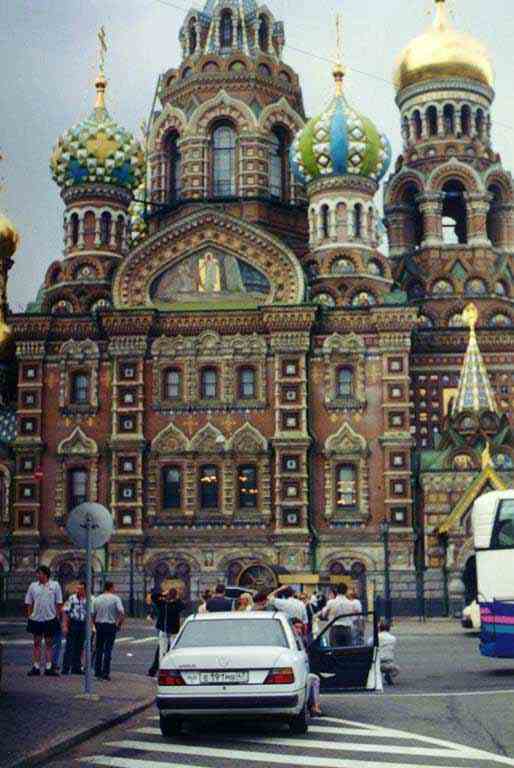
Dark clouds across the Neva River.
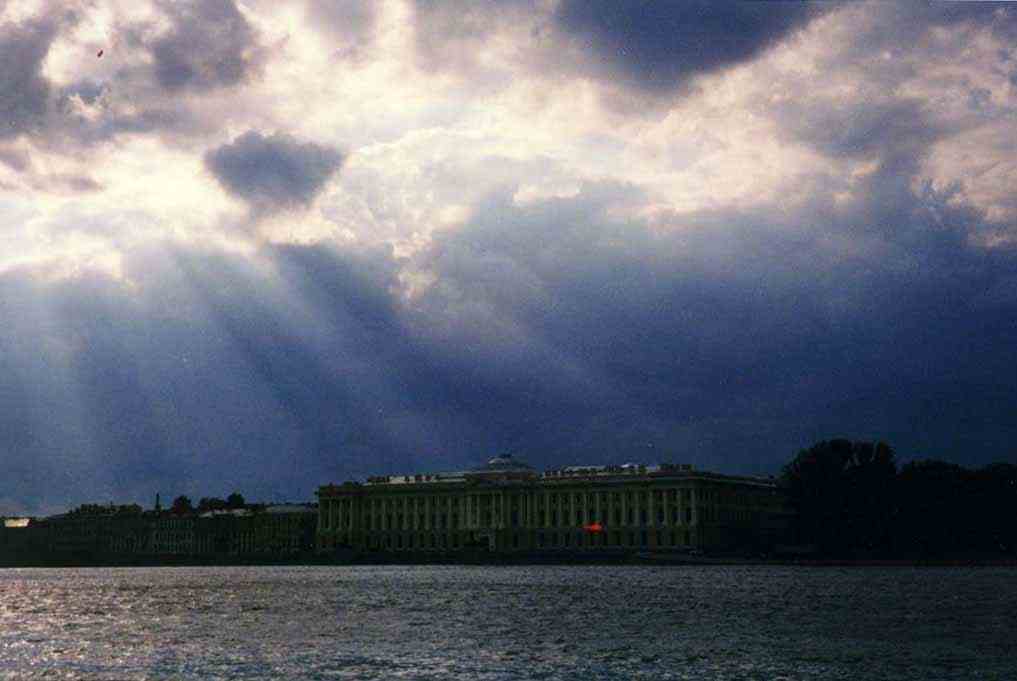
The Hermitage Museum (Winter Palace) across the Neva River.
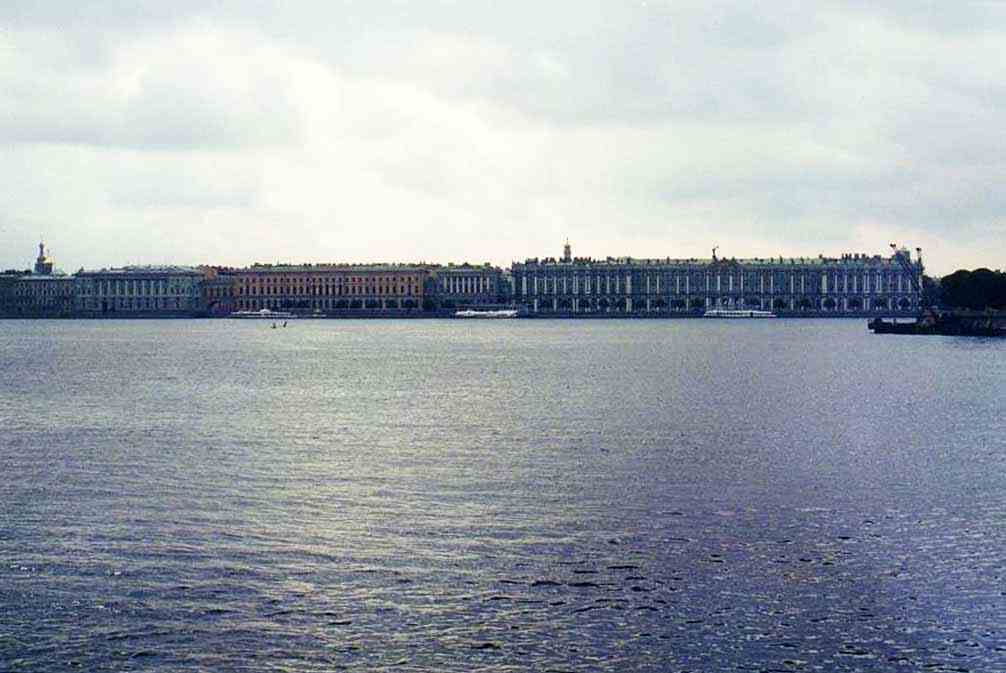
Buildings across the Neva River.

The old stock exchange building (now the Central Naval Museum). The Rostral Columns with their captured ship prows are in the foreground.
They were beacons (lighthouses)
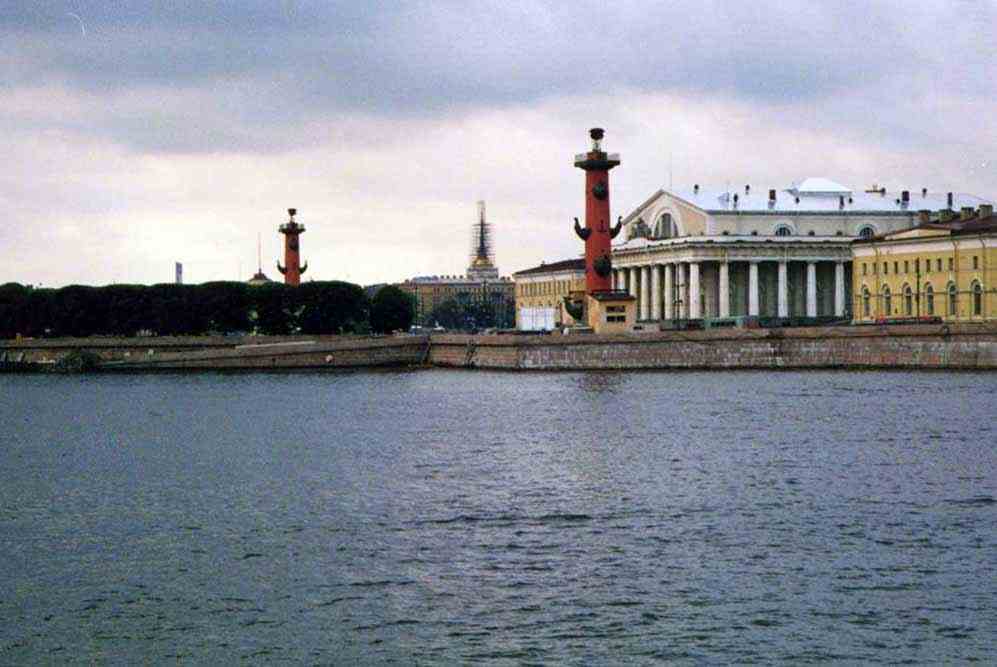
Margaret and our guide, Olga, with the Neva River and the Lenningrad State University in the background. Pavlov and Mendel did their research here.

Some young Russians on the banks of the Neva River with Lenningrad State University in the background.

Catching up on the diary. The Hermitage Museum (Winter Palace) in the background.

Looking across Palace Square to the Hermitage Museum (Winter Palace).
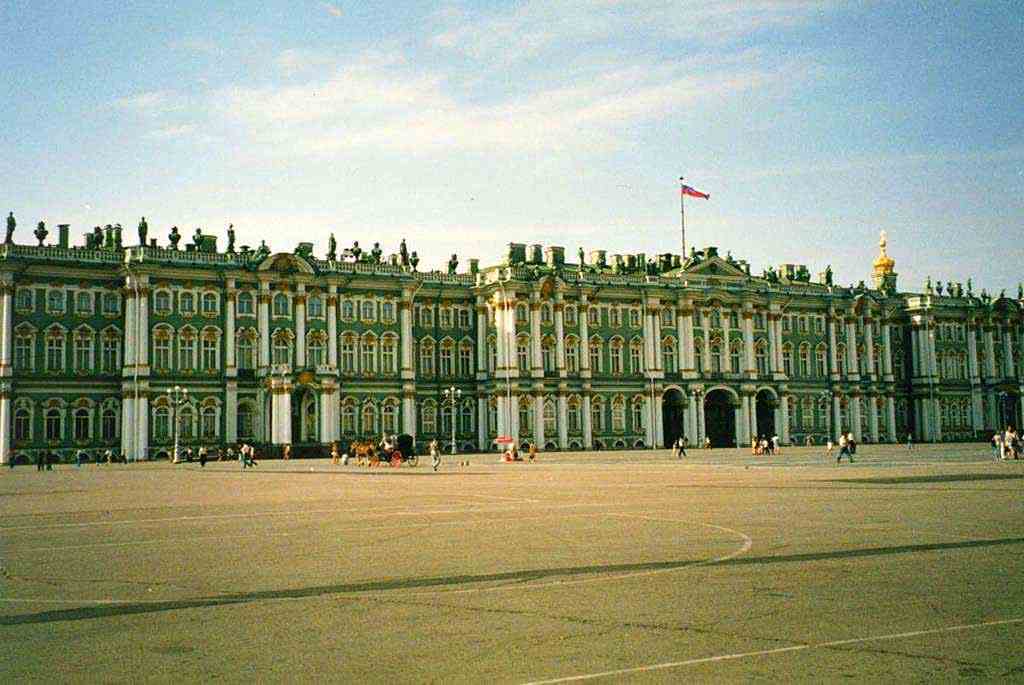
A closer view across Palace Square of the Hermitage Museum (Winter Palace).

Looking across Palace Square to the General Staff Building. The Alexander Column on the left is hewn out of a single block of granite.
It honors the Russian victory over Napoleon in 1812 during the reign of Alexander 1.
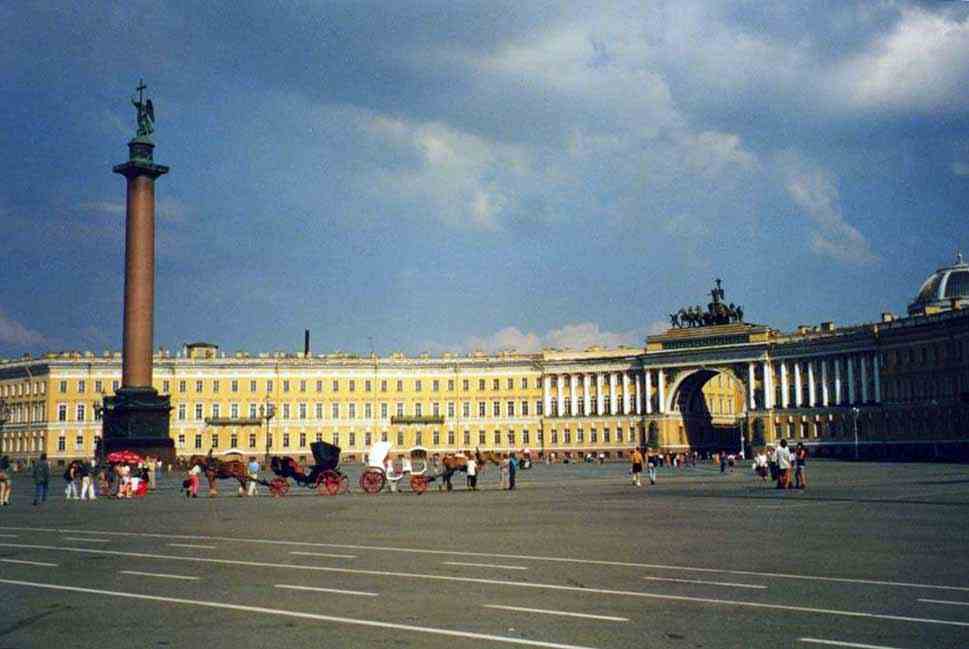
The Triumphal Arch of the General Staff Building. Crowning the arch is the sculpture of the chariot of victory drawn by 6 horses.
This statue is not unlike one that we saw in Paris that had a checkered history.
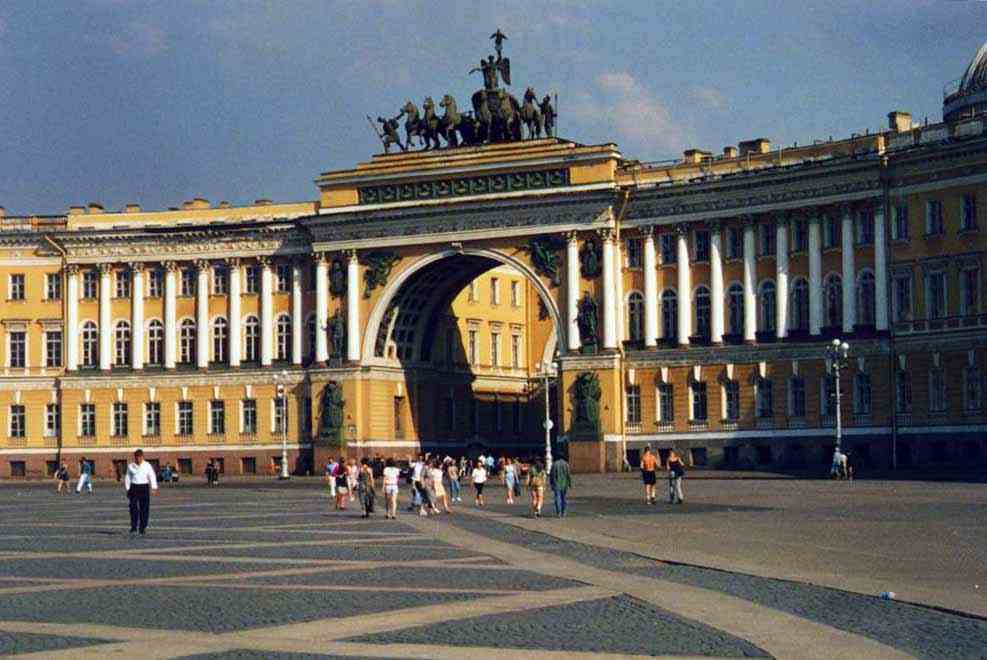
"The Bronze Horseman". Created by the French sculptor Etienne-Maurice Falconet in 1782, it is a monument to Peter the Great.
The rock base took 5 months to be transported to this spot.
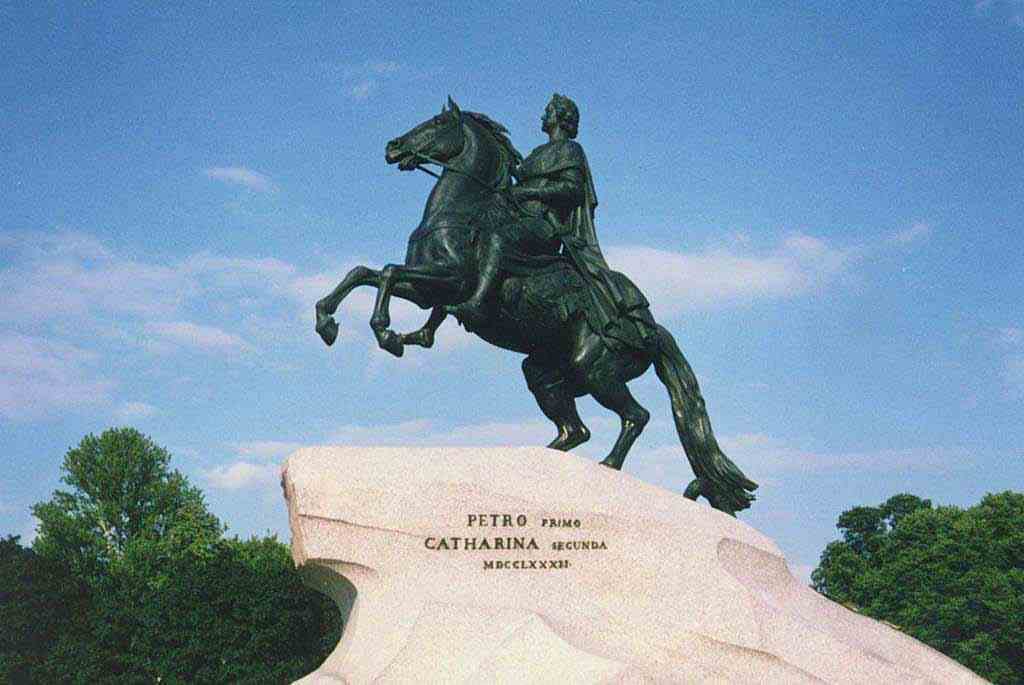
The Hermitage
The State Hermitage Museum is now the second-largest art museum in the world, (to The Louvre in Paris).
It was founded in 1764 when Empress Catherine the Great acquired an impressive collection of paintings from the Berlin merchant Johann Ernst Gotzkowsky.
The museum celebrates the anniversary of its founding each year on 7 December, Saint Catherine's Day.
It has been open to the public since 1852.

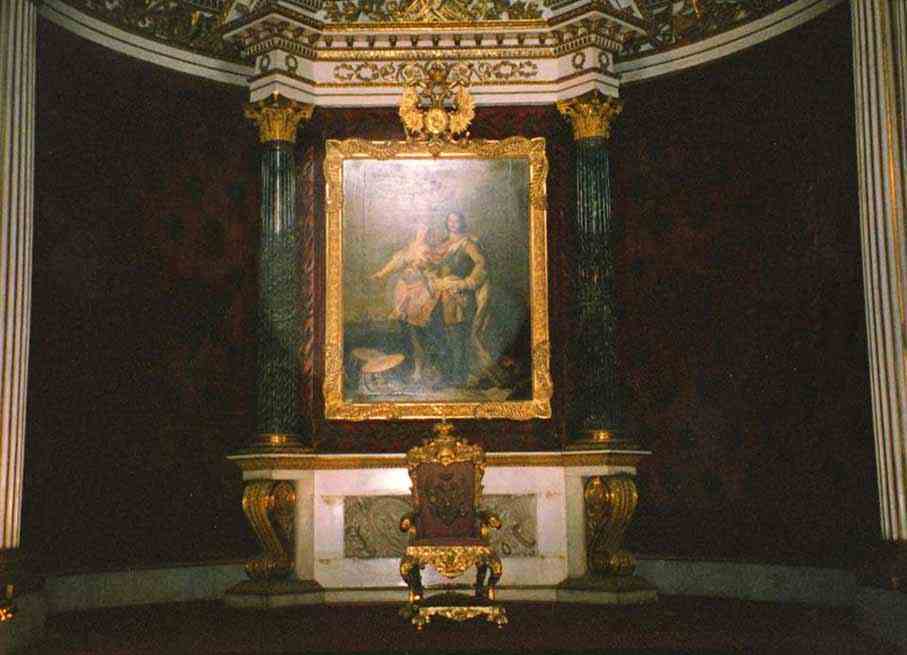

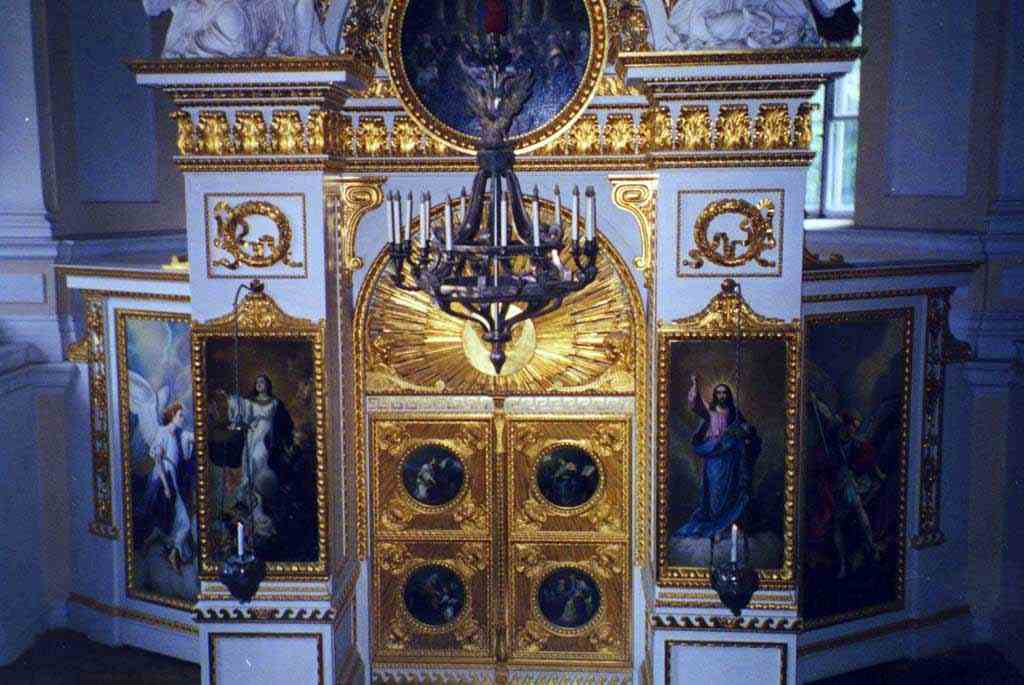
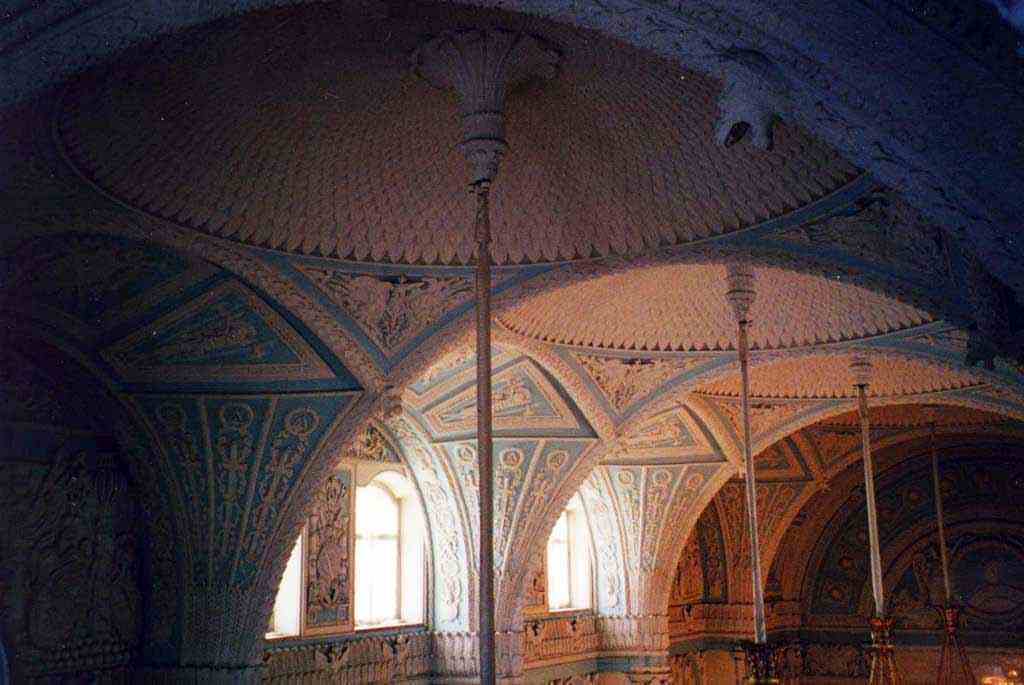


The Malachite Hall. There were many columns of solid malachite.
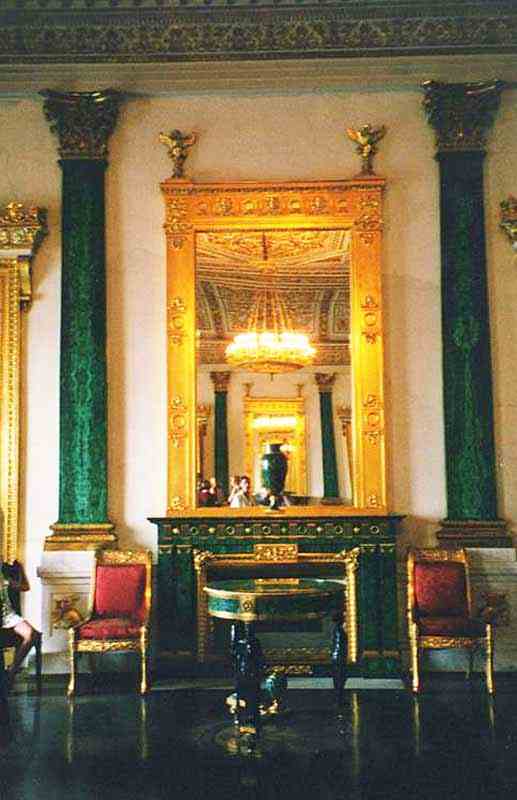
Inside the Hermitage. This was a magnificent piece of craftmanship.
The table was made of very fine mosaic pieces. Our guide, Olga, and Margaret are examining the table.
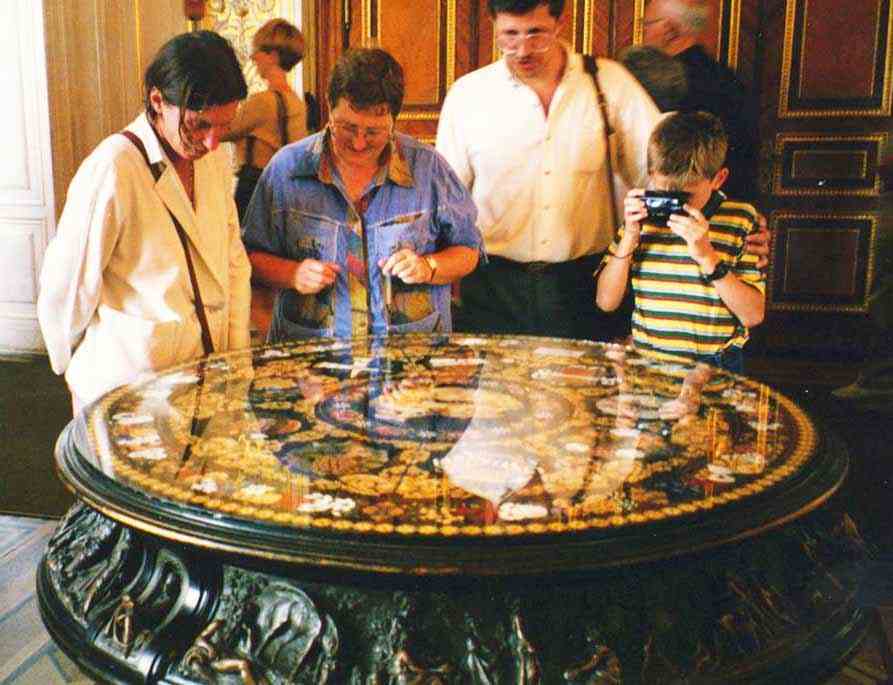
This large vessel was carved from one piece of malachite.
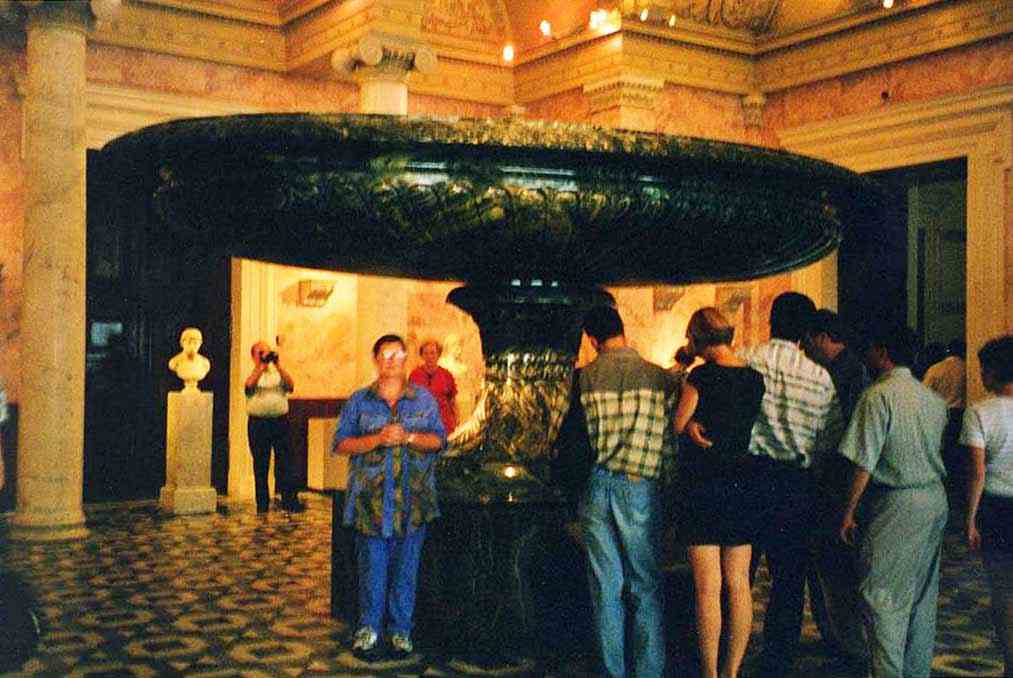
One of the many coaches of the Tsars that was on display.
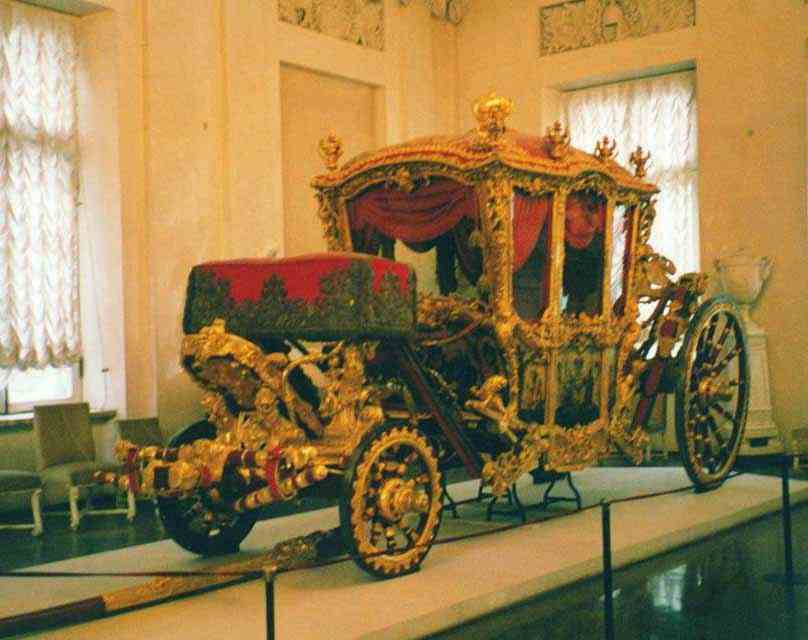
One of the many beautiful rooms with its glittering chandeliers.
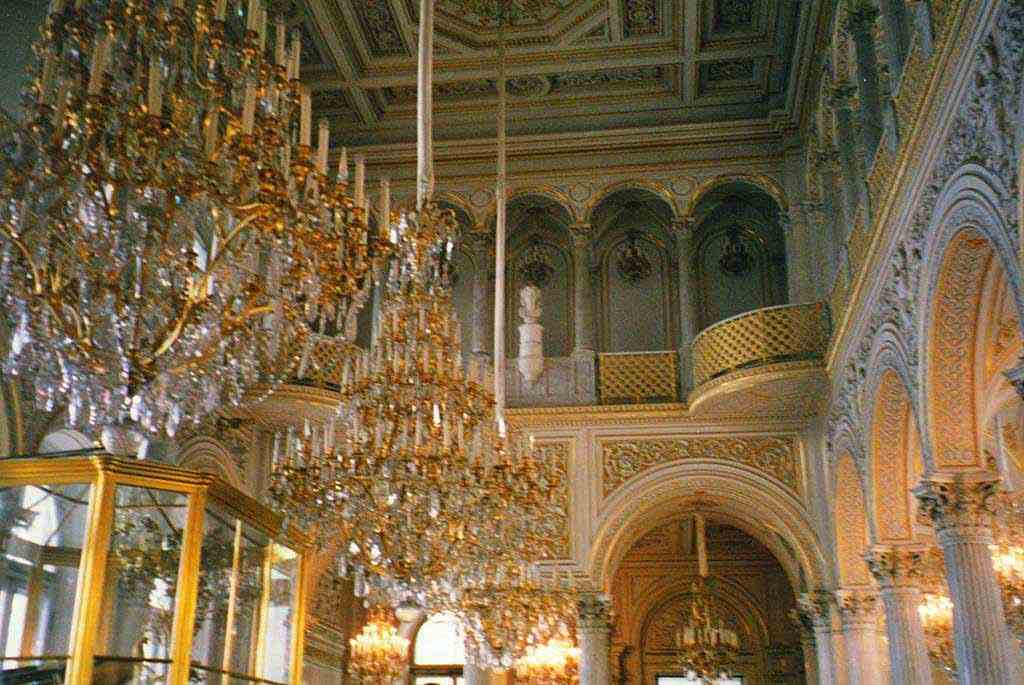
One of the magnificent rooms full of paintings of the old masters. There were Rembrants in this room.

Part of the palace room that was a library.

Catherine palace
This Rococo palace is located in the town of Tsarskoye Selo (Pushkin), 30 km south of St. Petersburg.
The residence originated in 1717, when Catherine I of Russia hired a German architect to construct a summer palace for her pleasure.
Empress Elizabeth, however, found her mother's residence outdated and incommodious and in 1752 asked her court architect Bartolomeo Rastrelli
to demolish the old structure and replace it with a much grander edifice in a flamboyant Rococo style.
Construction lasted for four years, and in July 1756 the architect presented the 325-meter-long palace to the Empress.
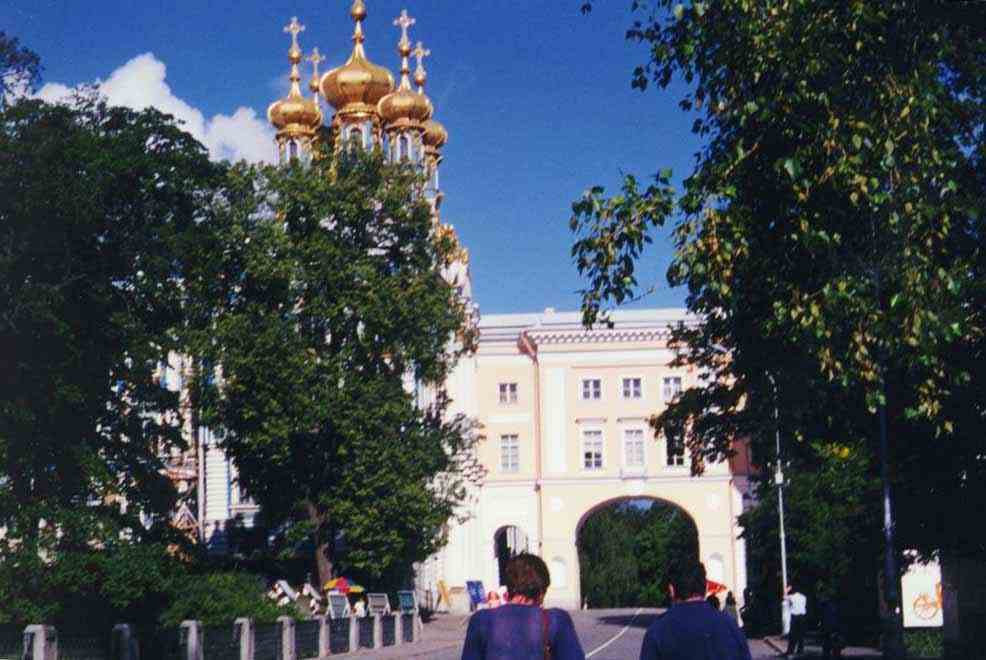
A Russian band welcoming us outside St. Catherine's Palace near St. Petersburg.

This couch inside St Catherines would have been a great spot to rest the feet during our palace tours.
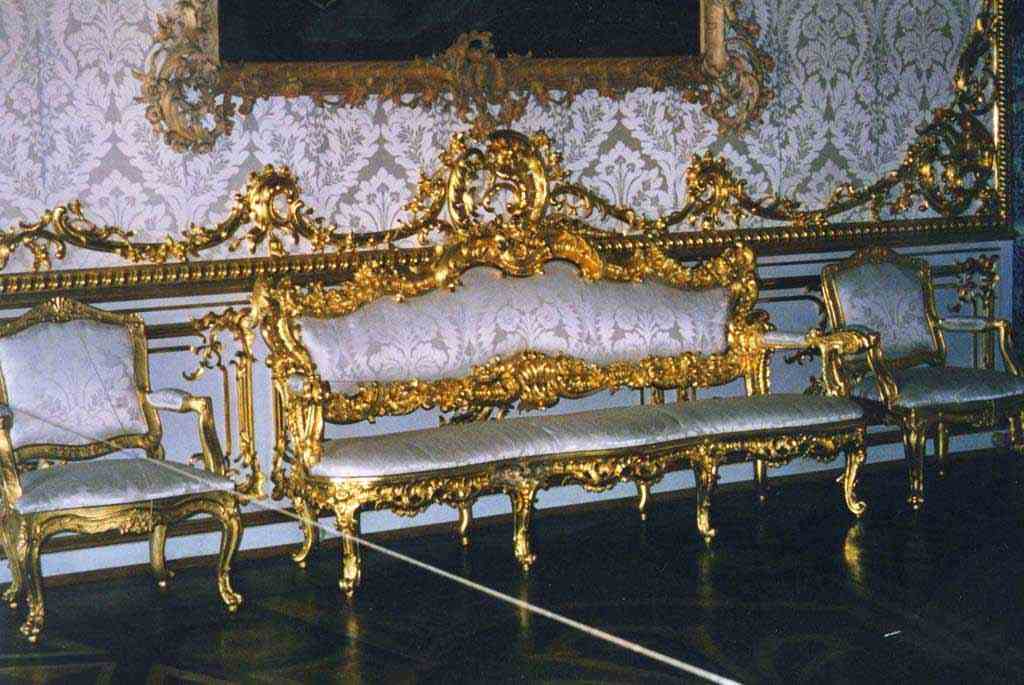
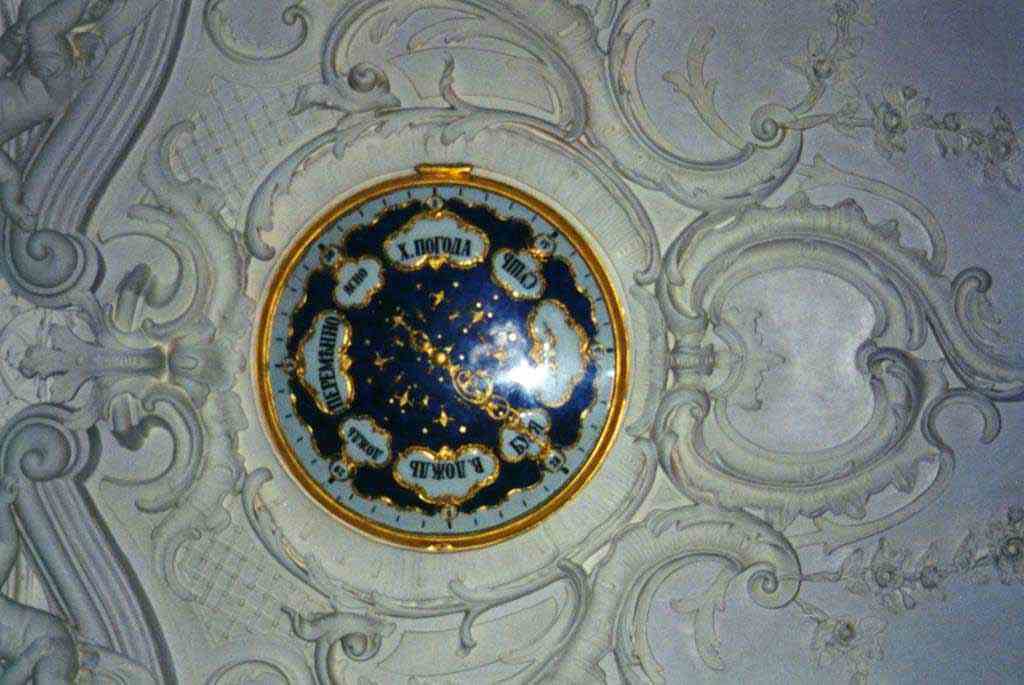

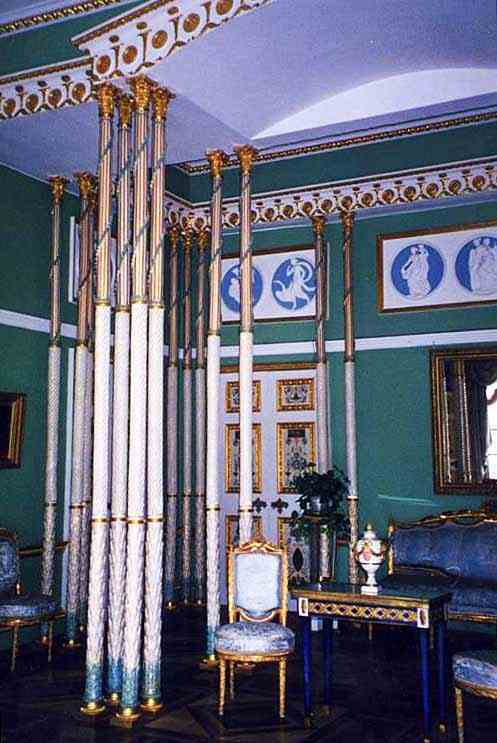


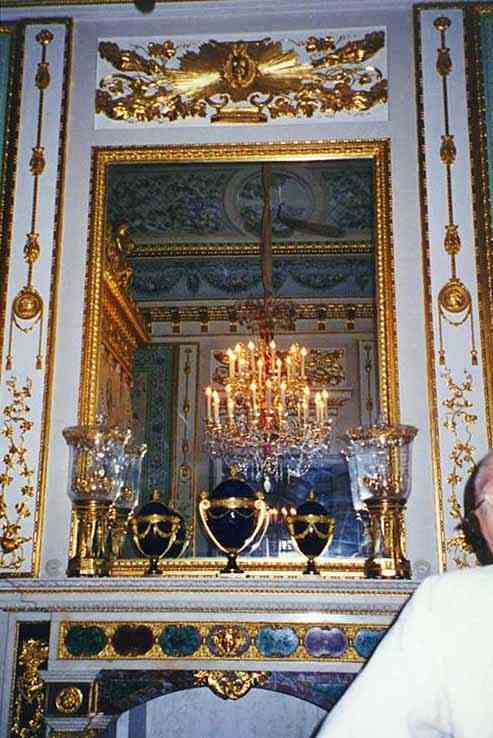
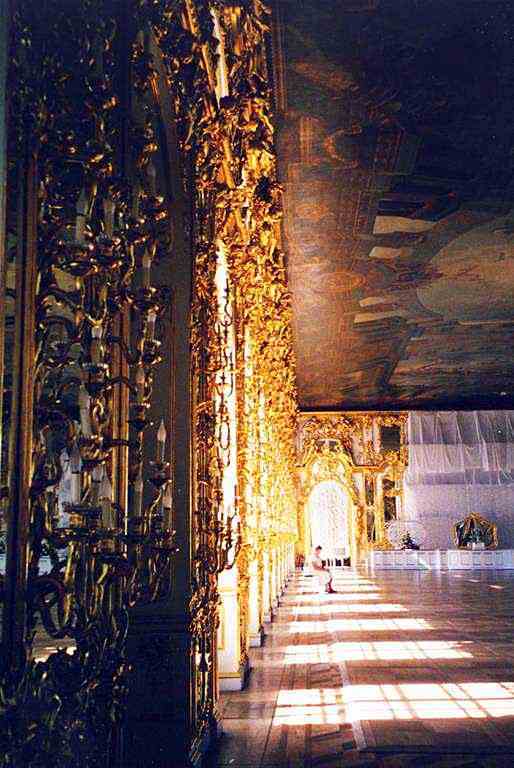
Pavlosk
In 1777, the Empress Catherine II of Russia gave a parcel of a thousand hectares of forest along the winding Slavyanka River,
4km from her residence at Tsarskoye Selo, to her son and heir Paul I and his wife Maria Feodorovna.

Part of the full dining setting for 100 guests. A large oval table was in the middle.
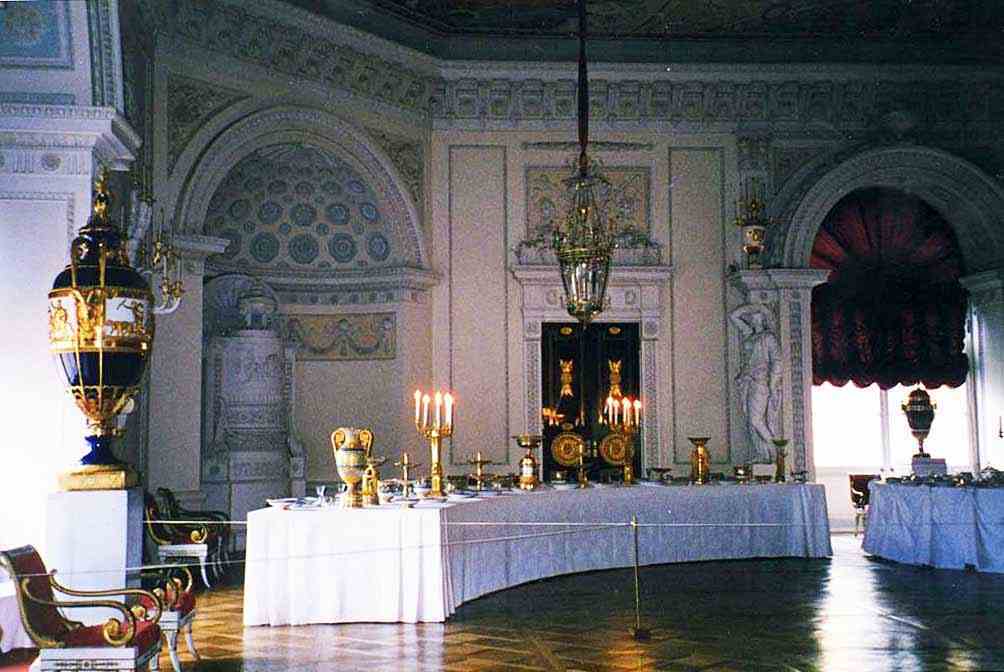
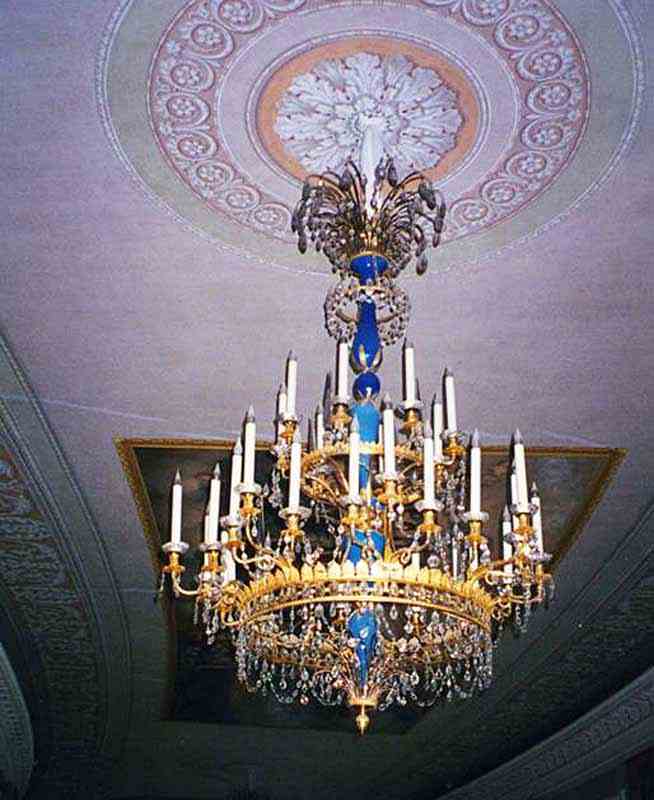
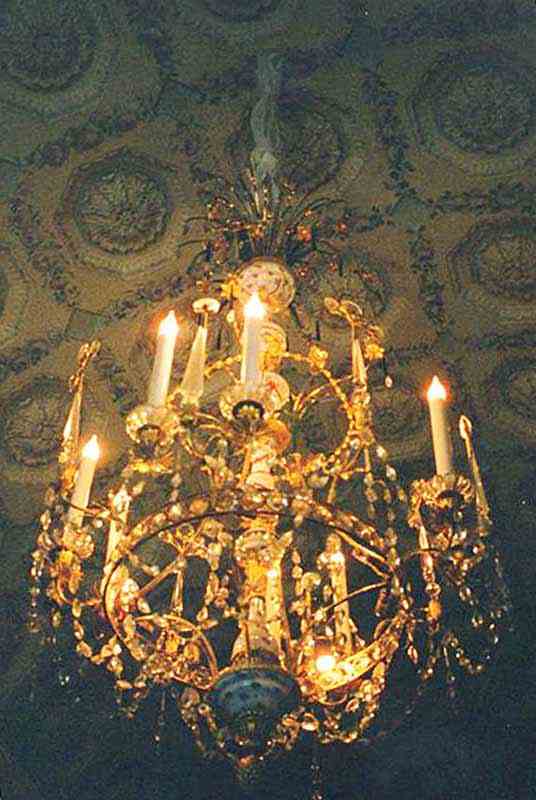
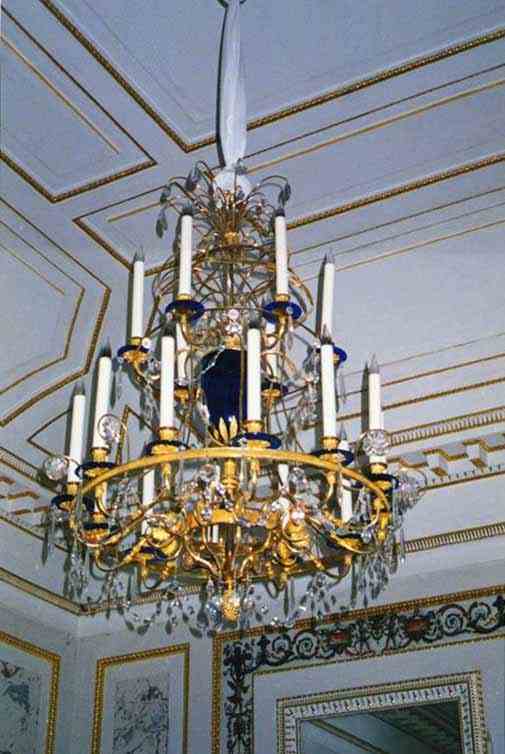
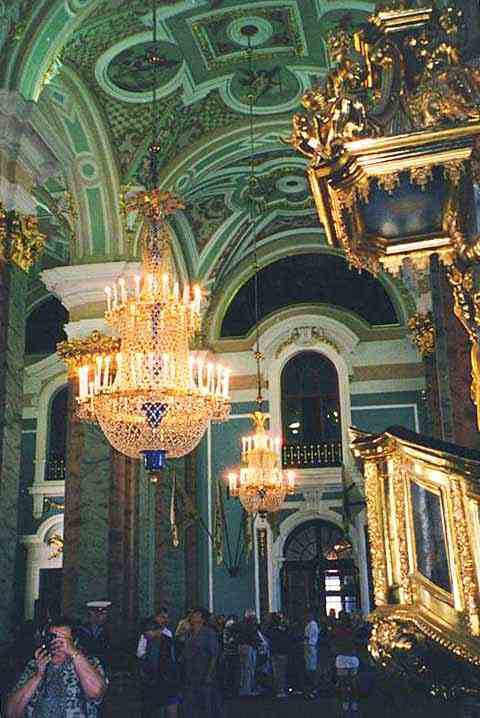
The spire and domes of the cathedral of Saints Peter and Paul at the Peter and Paul fortress.
Foundations of this fortress were started on 16th May 1703.
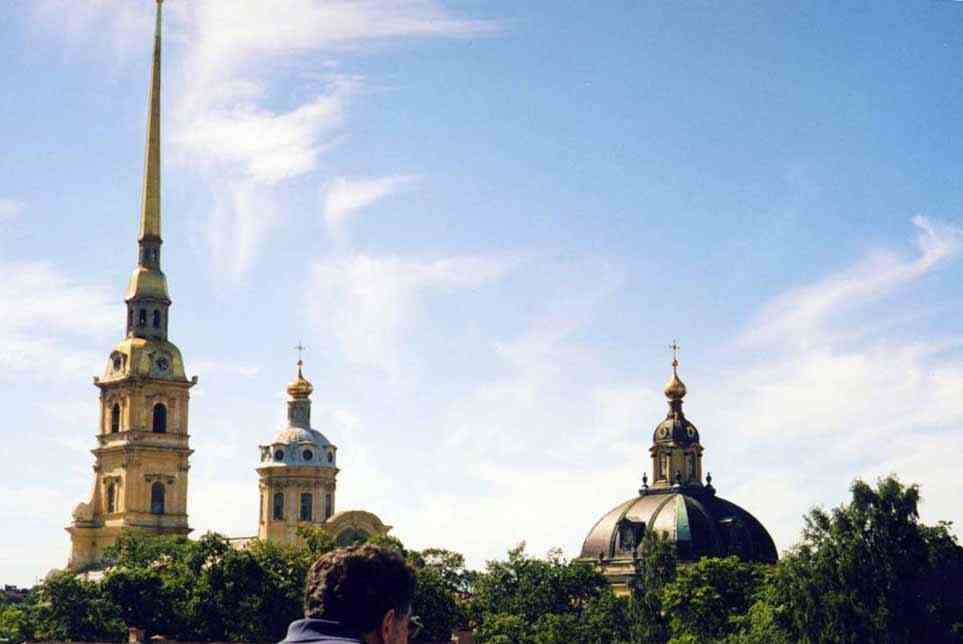
A St. Petersburg landmark. The spire and dome of the Cathedral of Saints Peter and Paul at the Peter and Paul fortress.
There are a number of tombs of the Tsars inside the cathedral including Peter the Great and Catherine the Great.
The Russians have recently added tombs for the remains of the last Tsar (the Nicholas Romanov) and his family.
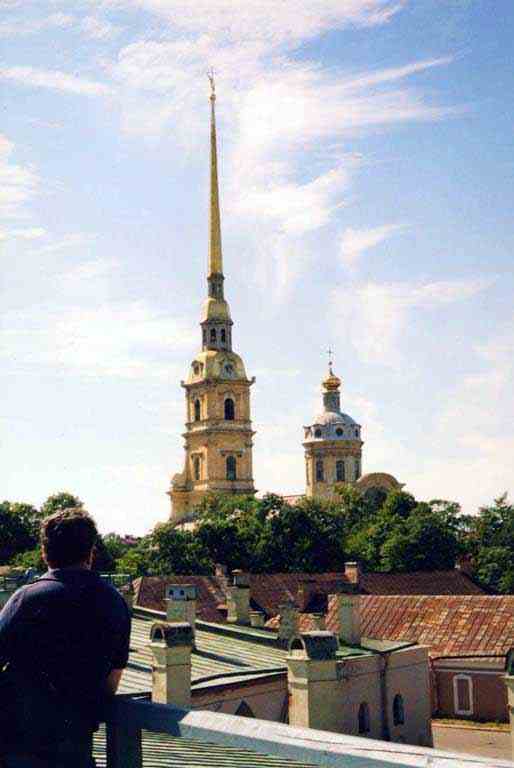
Can you wear bathing suits in winter? A sign at the Peter and Paul fortress.

An old Russian motor cycle at a small museum at the Peter and Paul fortress.
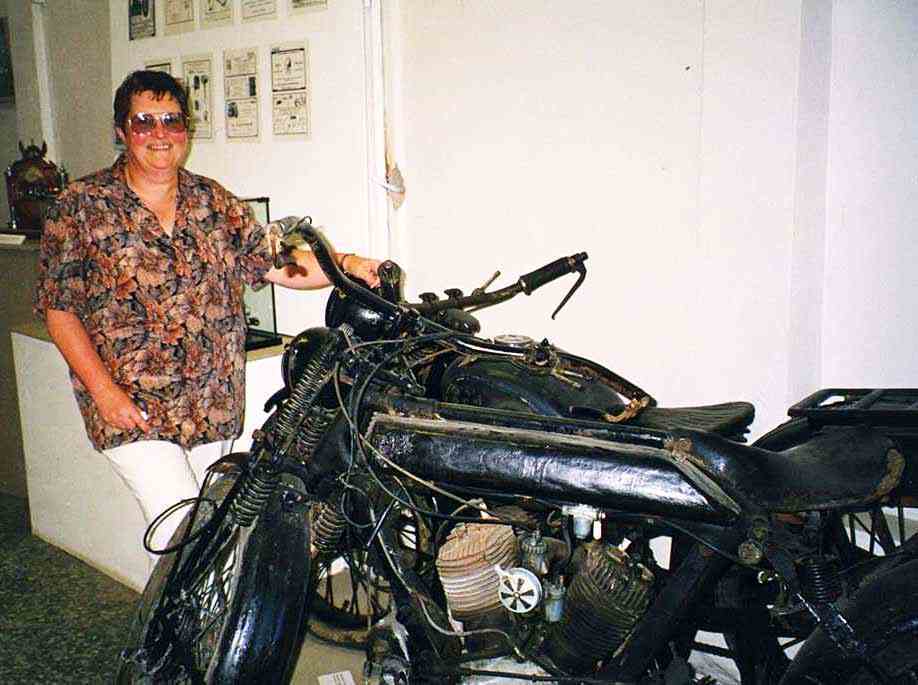
The cemetery at Alexander Nevsky Monastery.
The cemetery was opposite our St. Petersburg hotel.
Many famous writers and composers are buried here. (Tchaikovsky, Borodin, Rimsky Korsakov, Balakirev and Glinka).
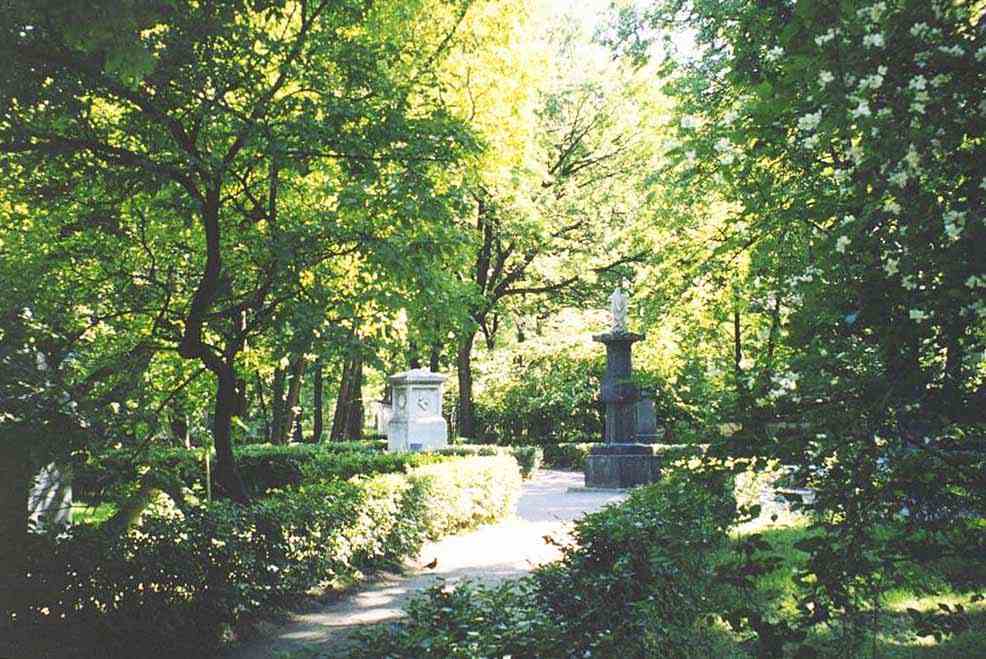
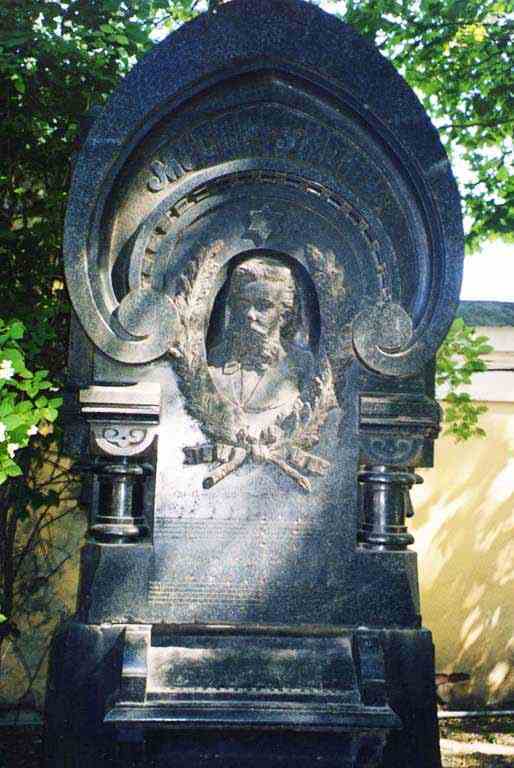
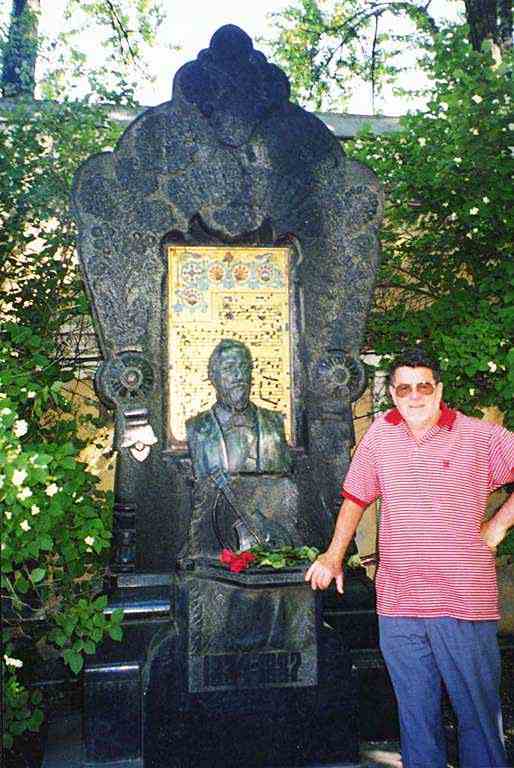
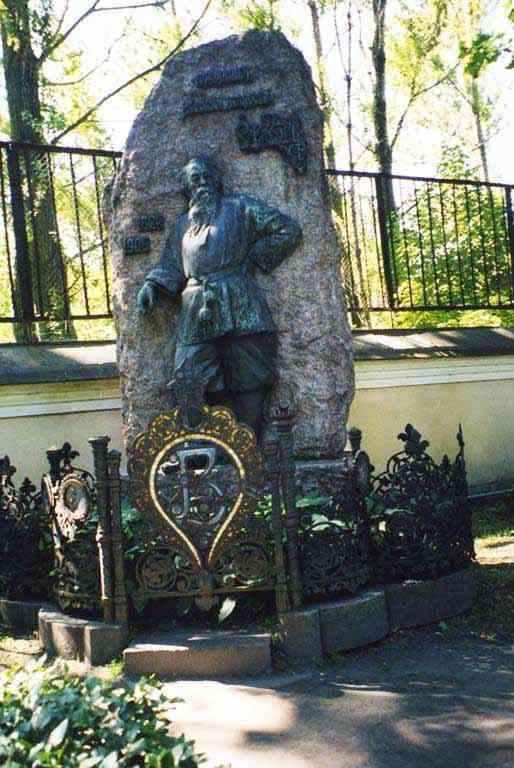


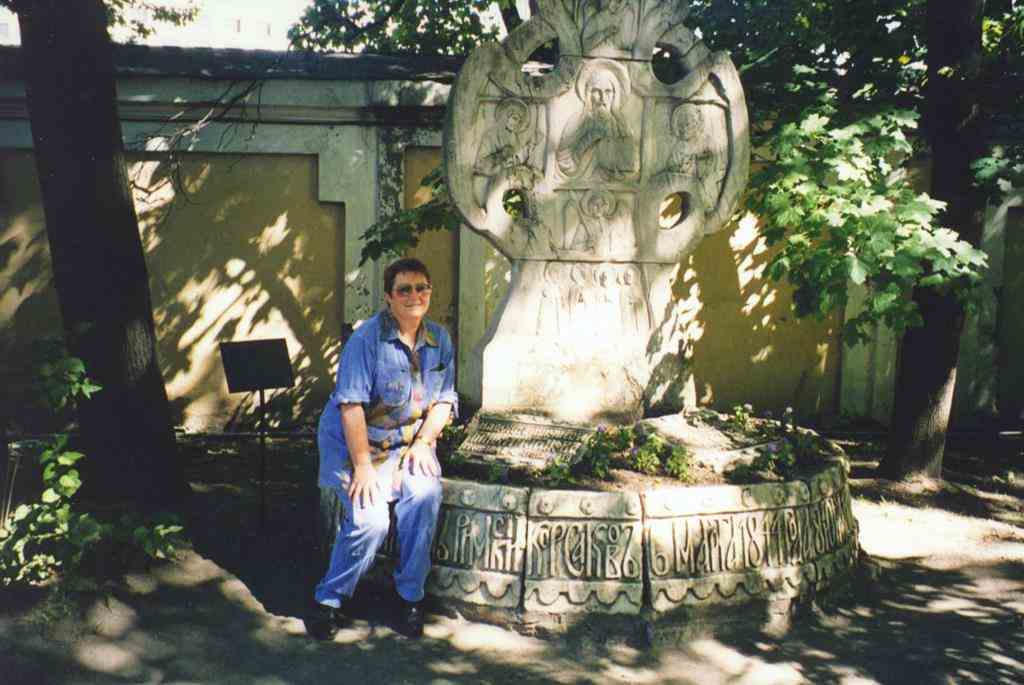
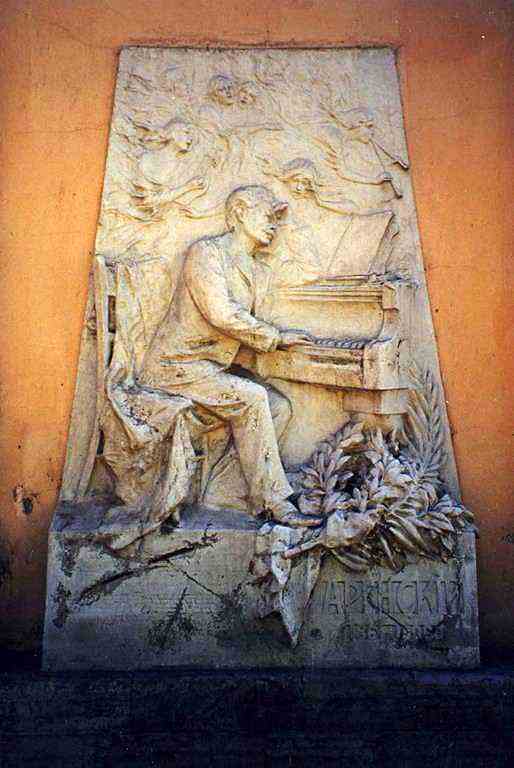
The view of the Neva River from our hotel (Hotel Moscow) in St. Petersburg.

Breakfast at the Hotel Moscow in St. Petersburg.
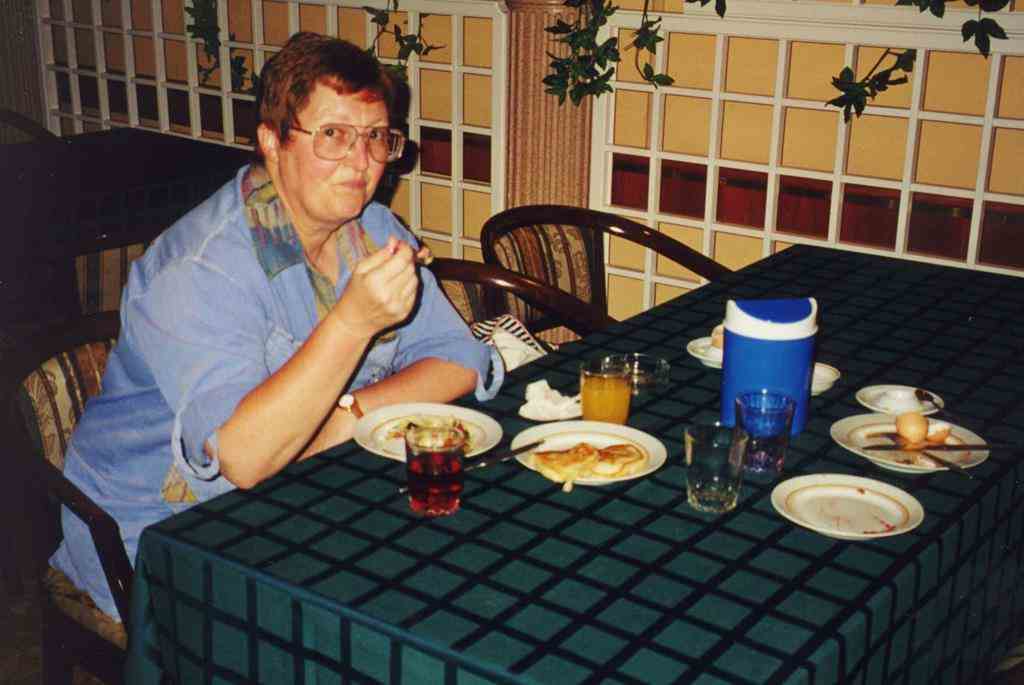
St. Isaac's Cathedral
It was erected to a design by Auguste Montferrand between 1818 and 1858. It can hold 14,000 people.
The entire building is faced with marble and there are 112 columns hewn out of red granite obtained from quarries in Finland.
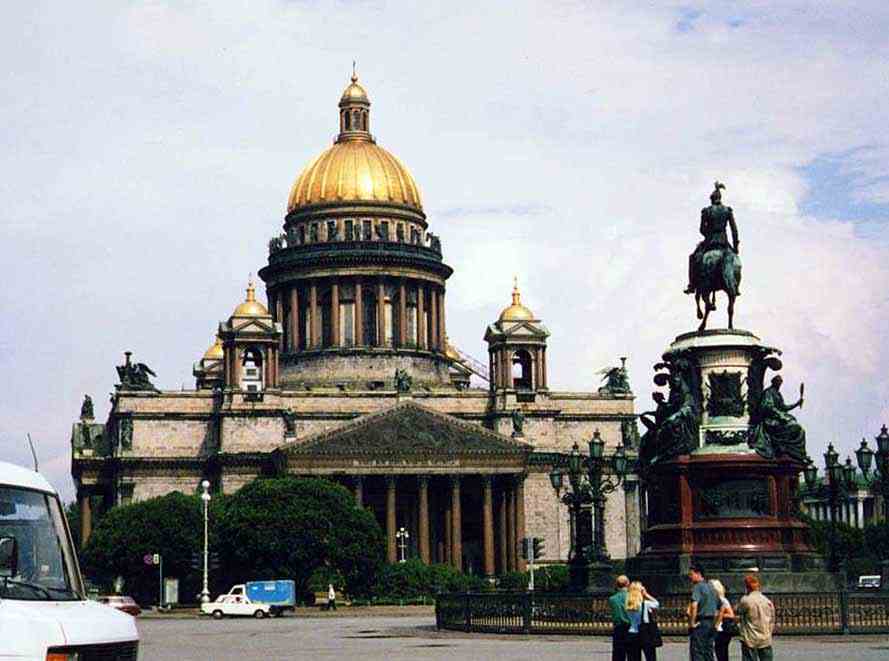
Yes, they have white wedding gowns in Russia too.

The St. Petersburg Sheraton Hotel. The Nevsky Sheraton.
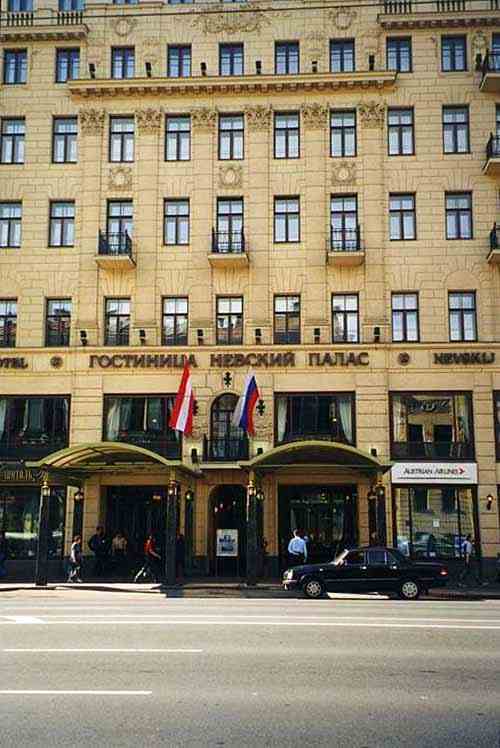
The countryside outside St. Petersburg.
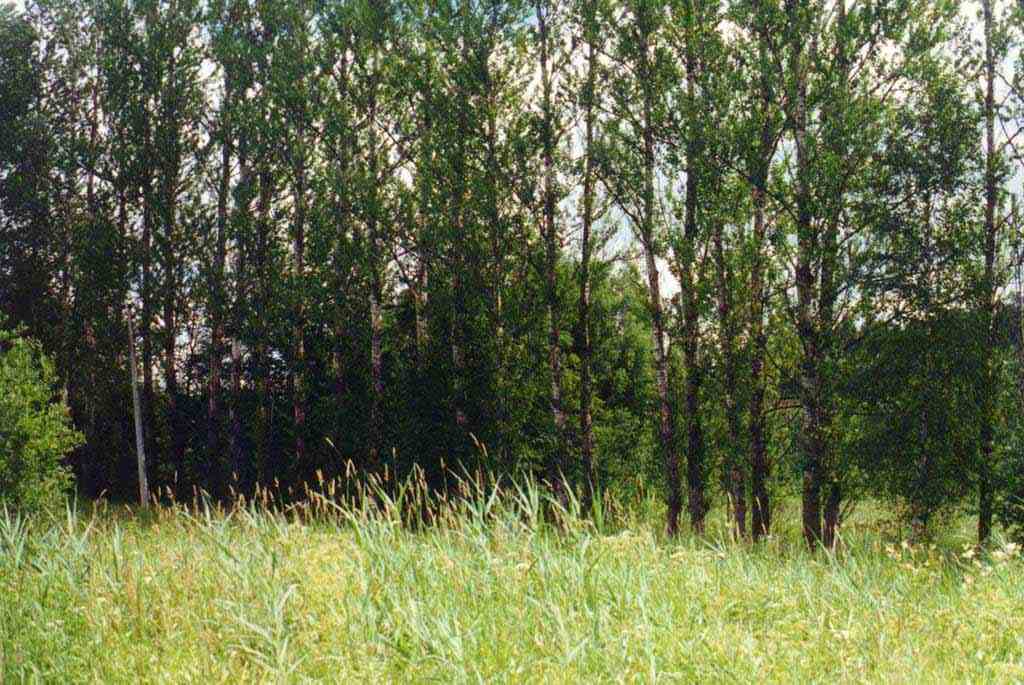
The spire of the Admiralty Building
The original stone Admiralty building was erected in 1719, and this marked the first appearance of the Admiralty Spire with its ship weathervane,
which was to become one of the most recognizable symbols of St. Petersburg.
The original Admiralty Yard was built in 1706 to plans by Peter the Great himself, and the site was chosen to be within range
of the canon of the Peter and Paul Fortress, so the building could be destroyed if captured by the enemy.
A U-shaped earth structure with an internal canal, it served as the shipyard that built the backbone of the nascent Russian Navy.

Photos from our 1999 trip
My second visit was when Margaret and I visited Russia on our first around-the-world trip in 1999.
(99-days - Melbourne - Bangkok - Frankfurt - Moscoe - St. Petersburg - Stockholm - Helsinki - Copenhagen - Malaga - London -
Western Europe - UK - Egypt - Jordan - Israel - Greece - New York - Las Vegas - Melbourne.)
We flew with Luthansa from Frankfurt to Moscow.
This is our Moscow hotel, the Hotel Rossija.
It was adjacent to the Kremlin and is in the Guiness Book of Records as one of the world's largest hotels with 3200 rooms.

This was the view when you lay on our hotel bed.

Another view when you lay on our hotel bed.

Yet another view when you lay on our hotel bed. A new shopping plaza being built behind the façade of a lovely Russian building.

New wooden shingles on the roof of a building near our hotel.

A view across Red Square over Lenin's Mausoleum to the Kremlin.

St. Basil's Cathedral on the edge of Red Square. You can see our hotel in the background.

The Moskva River, the Kremlin and our hotel.

The glittering Armoury building inside the Kremlin which houses the stunningly beautiful Russian crown jewels.

The Kremlin wall near Lenin's Mausoleum.

Along one of the sides of the Kremlin with our hotel in the background.

St. Basil's Cathedral.

Saviour (Spasskaya) Gate Tower of the Kremlin.

The Church of the Nativity of the Virgin in Putinki. (Mid 17th Century).

A closer view of the Armoury building inside the Kremlin which houses the beautiful Russian Imperial crown jewels.

Another tower in one of the walls of the Kremlin. The Kremlin is roughly triangular with 7 towers along each side. A total of 20 towers.

Another church near our hotel.

The Cathedral of the Annunciation, Archangel Cathedral and the Bell Tower of Ivan the Great inside the Kremlin.

The Kremlin wall near Lenin's Mausoleum.

Red Square, St. Basils, Lenin's Mausoleum and The Kremlin.

A view of a Moscow street outside our hotel.

Another church that we saw in our walks near our hotel.

Gateways underneath the State History Museum on the northern side of Red Square.

Alexander Gardens, fountains and the Bolshoi theatre near The Kremlin.

A Russian limousine.

The former State Department Store {GUM store (Gosudarstvennyy Universaluyy Magazin)}. It is now has lots of upmarket boutique stores - Nike etc.

A beautiful Russian shop assistant at a shop at the GUM store.

Inside the GUM store.

Part of the Moscow Metro, the Koltsevaya Line (Circle Line) was built in 1950–1954.
Of all the lines, it remains the most famous. It is notable for stations built at the height of Stalinist architecture.
Stalin had the vision to create a Metro system that would resemble “People’s Palaces”.
One of the beautiful Moscow metro stations. Most had chandeliers. It was a very efficient rail network as you never had to wait more than 90 seconds for a train.

Another Moscow metro station.
The people were very orderly; they waited on either side of the train door for the departing passengers to exit before they boarded the train



The ceiling of one of the Moscow metro stations.


A plaster mural in one of the Moscow metro stations.

A tiled mosaic in one of the Moscow metro stations




They sweep up the leaves with a broom.

The lake and gardens near the Novodevichy Convent

The walls of the Novodevichy Convent.

Bronze ducks near the Novodevichy Convent.

A park near the Novodevichy Convent.

Margaret writing up her diary with a drink at an underground shopping centre near the Kremlin.
It was the only air conditioned place that we could find in the 32 degree heat. It could be anywhere in the world.

The skylight of the underground shopping centre.

A fountain near the underground shopping centre.

The Moscow State University from Sparrow Hill.

The view of a soccer stadium from Sparrow Hill.

Arbat Street pedestrian mall. Lots of souvenir shops selling various Russian nesting dolls. You could buy Yelsin, Clinton, Monica Lewinski dolls etc.

A rest from the walking and shopping in Arbat Street pedestrian mall.

Musicians performing in an underpass under a street in Moscow. They were very, very good. Probably unemployed graduates from a music academy

A Russian crown used in the coronation of Tsars.

A painting "A lady with a rose" (1560) by Pari Pascalinus Bordone (1500 - 1571) in the Puskin Fine Arts Museum in Moscow.

This huge ship mounted on a column was to be a monument to Columbus. However it was changed to be a monument to Peter the Great.


We travelled on the overnight train from Moscow to St. Petersburg.
St. Petersburg
When I visited the city in 1985 it was called Leningrad.
In September 1991, the original name, Sankt-Peterburg, was returned by citywide referendum.
Today, in English the city is known as "Saint Petersburg".
Local residents often refer to the city by its shortened nickname, Piter.
[In September 1914, after the outbreak of World War I, the Imperial government renamed the city Petrograd, meaning "Peter's city",
in order to expunge the German words Sankt and Burg.
On 26 January 1924, shortly after the death of Vladimir Lenin, it was renamed to Leningrad.]
St. Peter and Paul fortress across the Neva River in St. Petersburg.

Peterhoff
Located just outside the city, Peterhoff was the summer palace of Peter the Great.
This was the best place that we saw on the whole trip. It is a sight that everyone must see in their lifetime.
The magnificent guilded fountains at Peterhoff.

There were over 250 fountains, mostly gilded at Peterhoff.

The beauty of Peterhoff was unrivalled by anything we saw on the whole trip.















As you can see in this photo and the next one this fountain head rotates to produce a different water pattern.
It is amazing to realise that these were designed 300 years ago.







The chessboard fountain.



The Church of the Resurrection of Christ in St. Petersburg that our guide, Olga, thought was rather tacky.
Note the Mercedes 180 in which we did most our travelling in St. Petersburg with our private driver, Alexander.

Dark clouds across the Neva River.

The Hermitage Museum (Winter Palace) across the Neva River.

Buildings across the Neva River.

The old stock exchange building (now the Central Naval Museum). The Rostral Columns with their captured ship prows are in the foreground.
They were beacons (lighthouses)

Margaret and our guide, Olga, with the Neva River and the Lenningrad State University in the background. Pavlov and Mendel did their research here.

Some young Russians on the banks of the Neva River with Lenningrad State University in the background.

Catching up on the diary. The Hermitage Museum (Winter Palace) in the background.

Looking across Palace Square to the Hermitage Museum (Winter Palace).

A closer view across Palace Square of the Hermitage Museum (Winter Palace).

Looking across Palace Square to the General Staff Building. The Alexander Column on the left is hewn out of a single block of granite.
It honors the Russian victory over Napoleon in 1812 during the reign of Alexander 1.

The Triumphal Arch of the General Staff Building. Crowning the arch is the sculpture of the chariot of victory drawn by 6 horses.
This statue is not unlike one that we saw in Paris that had a checkered history.

"The Bronze Horseman". Created by the French sculptor Etienne-Maurice Falconet in 1782, it is a monument to Peter the Great.
The rock base took 5 months to be transported to this spot.

The Hermitage
The State Hermitage Museum is now the second-largest art museum in the world, (to The Louvre in Paris).
It was founded in 1764 when Empress Catherine the Great acquired an impressive collection of paintings from the Berlin merchant Johann Ernst Gotzkowsky.
The museum celebrates the anniversary of its founding each year on 7 December, Saint Catherine's Day.
It has been open to the public since 1852.







The Malachite Hall. There were many columns of solid malachite.

Inside the Hermitage. This was a magnificent piece of craftmanship.
The table was made of very fine mosaic pieces. Our guide, Olga, and Margaret are examining the table.

This large vessel was carved from one piece of malachite.

One of the many coaches of the Tsars that was on display.

One of the many beautiful rooms with its glittering chandeliers.

One of the magnificent rooms full of paintings of the old masters. There were Rembrants in this room.

Part of the palace room that was a library.

Catherine palace
This Rococo palace is located in the town of Tsarskoye Selo (Pushkin), 30 km south of St. Petersburg.
The residence originated in 1717, when Catherine I of Russia hired a German architect to construct a summer palace for her pleasure.
Empress Elizabeth, however, found her mother's residence outdated and incommodious and in 1752 asked her court architect Bartolomeo Rastrelli
to demolish the old structure and replace it with a much grander edifice in a flamboyant Rococo style.
Construction lasted for four years, and in July 1756 the architect presented the 325-meter-long palace to the Empress.

A Russian band welcoming us outside St. Catherine's Palace near St. Petersburg.

This couch inside St Catherines would have been a great spot to rest the feet during our palace tours.








Pavlosk
In 1777, the Empress Catherine II of Russia gave a parcel of a thousand hectares of forest along the winding Slavyanka River,
4km from her residence at Tsarskoye Selo, to her son and heir Paul I and his wife Maria Feodorovna.

Part of the full dining setting for 100 guests. A large oval table was in the middle.





The spire and domes of the cathedral of Saints Peter and Paul at the Peter and Paul fortress.
Foundations of this fortress were started on 16th May 1703.

A St. Petersburg landmark. The spire and dome of the Cathedral of Saints Peter and Paul at the Peter and Paul fortress.
There are a number of tombs of the Tsars inside the cathedral including Peter the Great and Catherine the Great.
The Russians have recently added tombs for the remains of the last Tsar (the Nicholas Romanov) and his family.

Can you wear bathing suits in winter? A sign at the Peter and Paul fortress.

An old Russian motor cycle at a small museum at the Peter and Paul fortress.

The cemetery at Alexander Nevsky Monastery.
The cemetery was opposite our St. Petersburg hotel.
Many famous writers and composers are buried here. (Tchaikovsky, Borodin, Rimsky Korsakov, Balakirev and Glinka).








The view of the Neva River from our hotel (Hotel Moscow) in St. Petersburg.

Breakfast at the Hotel Moscow in St. Petersburg.

St. Isaac's Cathedral
It was erected to a design by Auguste Montferrand between 1818 and 1858. It can hold 14,000 people.
The entire building is faced with marble and there are 112 columns hewn out of red granite obtained from quarries in Finland.

Yes, they have white wedding gowns in Russia too.

The St. Petersburg Sheraton Hotel. The Nevsky Sheraton.

The countryside outside St. Petersburg.

The spire of the Admiralty Building
The original stone Admiralty building was erected in 1719, and this marked the first appearance of the Admiralty Spire with its ship weathervane,
which was to become one of the most recognizable symbols of St. Petersburg.
The original Admiralty Yard was built in 1706 to plans by Peter the Great himself, and the site was chosen to be within range
of the canon of the Peter and Paul Fortress, so the building could be destroyed if captured by the enemy.
A U-shaped earth structure with an internal canal, it served as the shipyard that built the backbone of the nascent Russian Navy.
